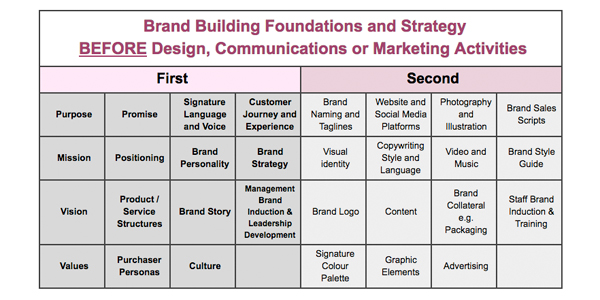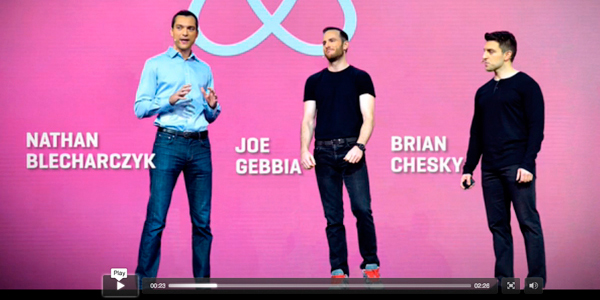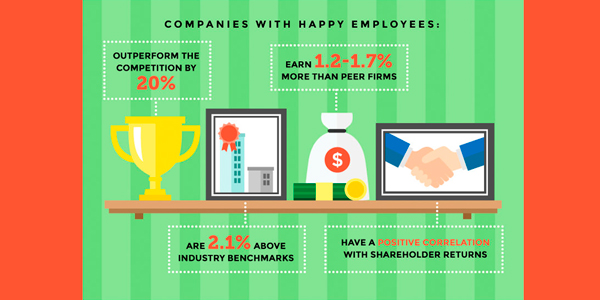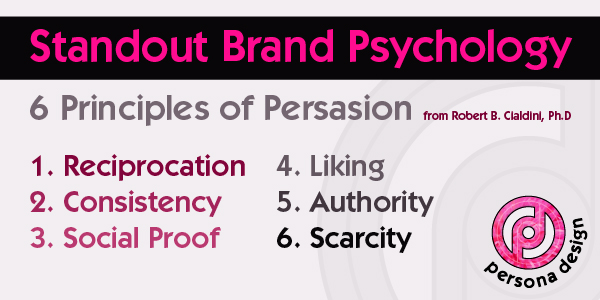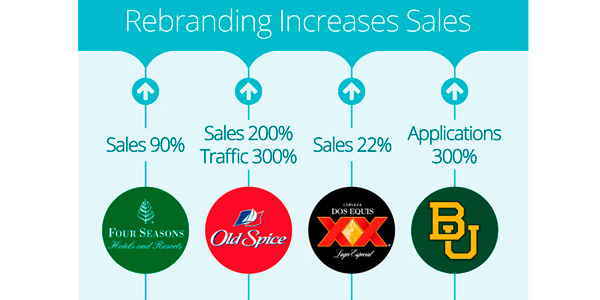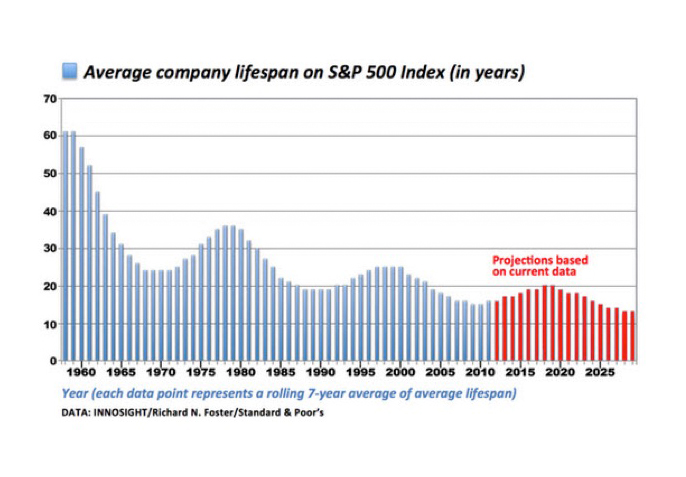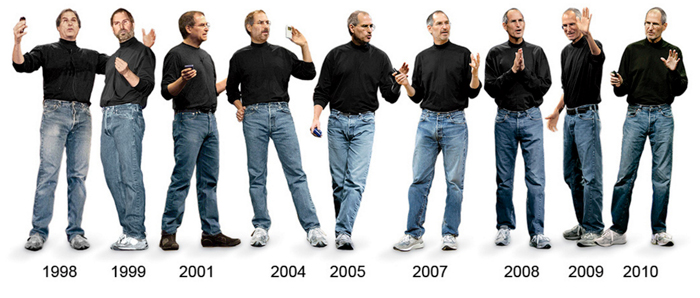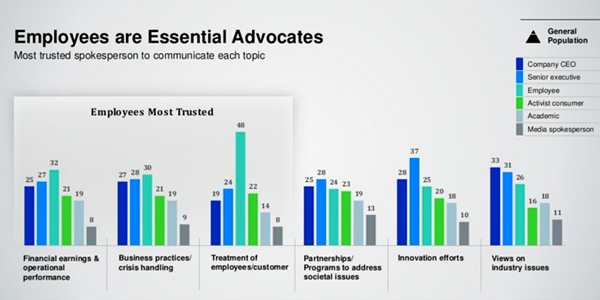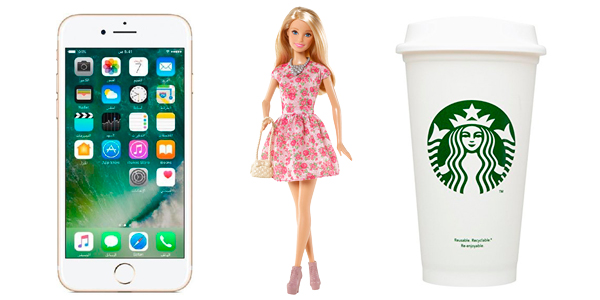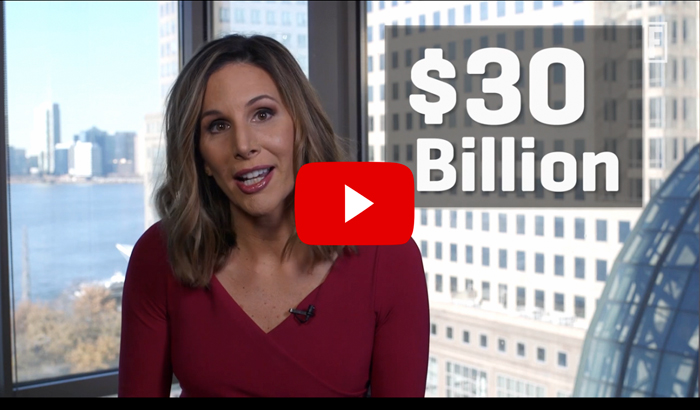Why Do I Need A Brand? I’ve Got A Great Product and a Logo
/0 Comments/in Brand Strategy, Branding /by Lorraine CarterWhy do I need a brand?
Good question! It’s one we’re often asked because it seems that somewhere along the way, ‘brand’, ‘logo’ and ‘branding’ became confused.
It’s critical to understand that branding is NOT marketing or design but the bedrock strategy supporting and directing your whole business so your brand strategy is fundamental to your business’s success, longevity and ongoing profitability.
Strategically-minded business managers realize that to create a properly valued brand, they must present customers with emotionally based, engaging, and compelling brand experiences that go beyond the service or product on the shelf.
Why Do I Need a Brand? Because Brands Add Value
It’s worth pointing out that a brand adds real value….now and in the future.
Dave Bookbinder, Director of Valuation Services at EisnerAmper, writes, “Like most things in valuation, the value of a brand is a forward-looking exercise, where the value of the asset today is equal to the present value of the asset’s cash flows in the future. In the case of a brand, the ‘cash flows’ are typically sales.” [1]
A brand adds asset value beyond tangible assets such as inventory, machinery, buildings, and land. Intangible assets are valued as intellectual property.
According to Investopedia, “…A company’s brand can be one of its most valuable assets. Brand value is intangible, making it difficult to quantify, but common approaches take into account the cost it would take to build a similar brand, the cost of royalties to use a brand name, and cash flow of comparative unbranded businesses.
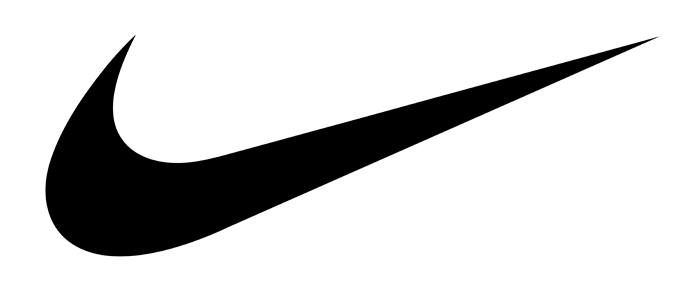
Image via Wikimedia Commons
Nike Inc., for example, owns one of the world’s most instantly recognizable logos, the “swoosh.” Forbes estimated Nike’s brand to be worth $29.6 billion in 2017, despite that fact that – in a world devoid of brand perception – taking the swoosh off Nike’s shoes and apparel would change nothing about their comfort or boost to athletes’ performance.” [2]
Brand Action Points for Entrepreneurs and Business Owners Who Are Questioning ‘Why Do I Need A Brand?’
Step 1: Once you go from having an idea to creating a product or service, you must also create your branding, aligned with your business strategy. This is what provides direction for all marketing, communications and design, both internally within the business itself and also on the customer-facing front. (Note: design alone is NOT branding!)
In fact, a product or service is merely a generic entity until it is given meaning in people’s minds—through a brand.
Step 2: Build your brand using the brand codification process—mapping out your brand strategically to attract your ideal customers. As with any plan, it’s important to look down the road ahead.
We’re all busy so building the bedrock brand strategy supporting and directing your whole business to ensure it’s growth and sustained longevity may not be your top skillset. If you’d like professional branding input and want access to a detailed overview of what’s key in the brand strategy context to grow your business then get in touch? Alternatively book one of our transformational workshops, brand building intensives or masterclasses.
The Persona Brand Building Blueprint™ Mastermind empowers you to build your brand strategy, raise the visibility of your brand, increase profitability, reduce customer acquisition costs and position your brand as the №1 choice for your customers.
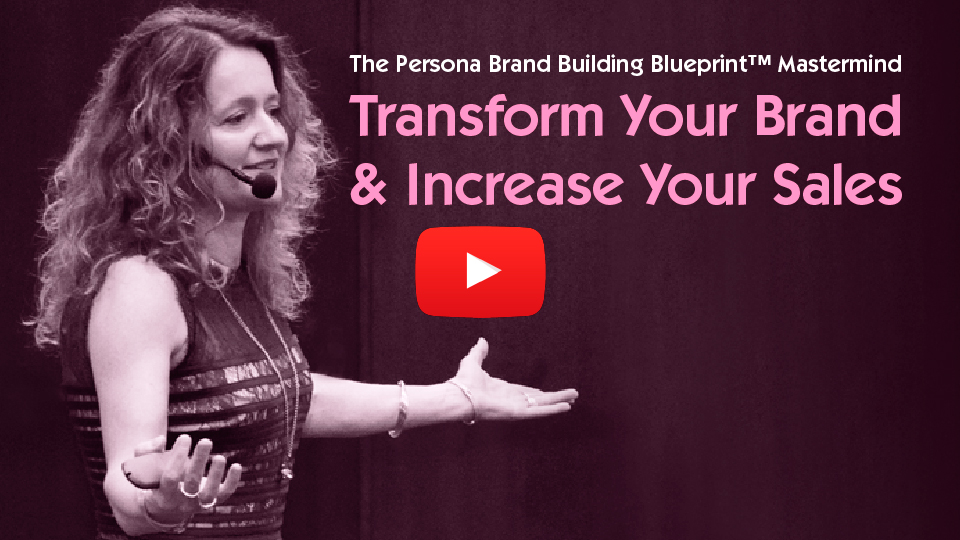
Build your standout brand at the Persona Brand Building Blueprint™ Mastermind with Lorraine Carter
Related: Design is Not Branding, 10 Things Every Business Owner and Entrepreneur Should Know
Creating a Brand…and Everything That Embraces
Your brand needs to be thinking with its heart because emotion wins the battle for a customer’s wallet.
Branding involves a wide range of fundamental concepts. Most importantly, your brand is the cornerstone and foundation that your business is built upon.
Watch: “What is Branding?”
Related: Use Psychology in Your Brand Strategy to Create Irresistible Brand Experiences and Increase Sales
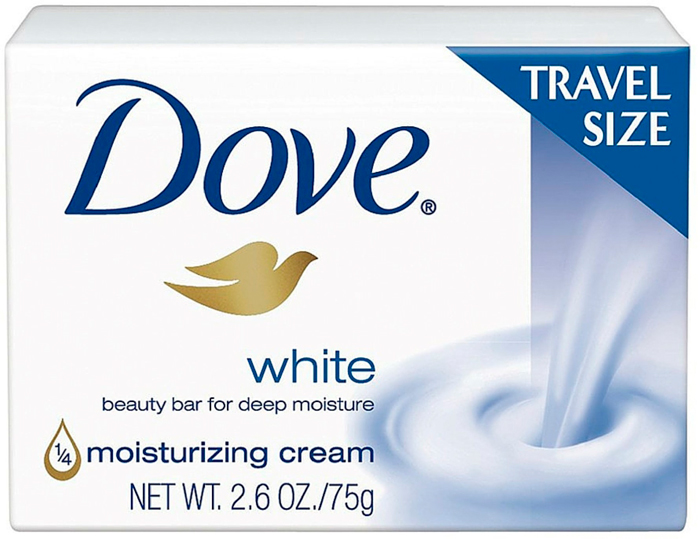
Image via Wikimedia Commons
Think about Dove soap. There’s really nothing inspiring about a bar of soap to wash your hands and face; wouldn’t any inexpensive no-name product do the job? Yet, Dove sells more $4 billion worth of soap around inspirational brand pillars such as “Real Beauty.”

Image via Patagonia
Think about Patagonia. They make jackets for outdoor activities to keep you warm, amongst other things. However, what’s a key factor in driving increased sales? A brand foundation promising to protect the environment, fight global warming, keep their carbon footprint to a minimum and do minimal damage to the planet while making the products their customers love. This mission is central to the Patagonia brand foundations and consequently attracts customers with similarly aligned values. Their continuous endeavours and brand activism are what also help maintain customer loyalty and referral amongst a like-minded community.
Note that just because something exists or can be found on the shelf doesn’t make it a brand; ‘enhancing’ it by slapping on a logo doesn’t create a brand either. Therefore:
- A logo is an identification via a recognizable mark or symbol.
- A brand is the emotional experience someone feels when they interact with a product or service because emotion drives purchase.
Remember: A brand on its own is not a logo.Your logo is merely your visual identifier, not your brand. |
When we think of a logo as the ID card in your wallet, there’s no confusion about the role it plays—and cannot play—when compared to the actual individual it represents.
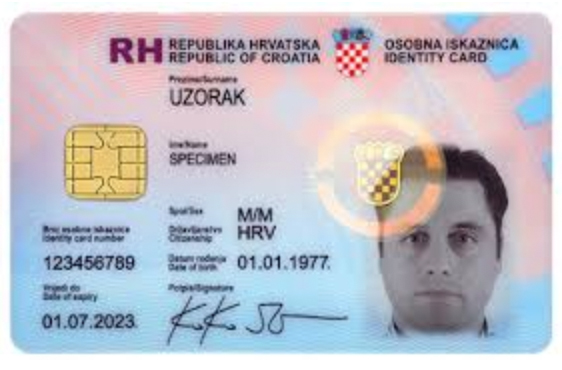
Image via Wikimedia Commons
A brand is required to identify the unique experience your product or service delivers and its key points of distinction from the competition.
Related: Top 10 Brands for Customer Experience and What You Can Learn From Them
Why Do I Need A Brand? Because It’s The Entity Through Which You Articulate Your Brand Positioning and Messaging To Attract Your Ideal Customers
The important considerations are:
- Whether or not your brand has a foundation to underpin the bedrock of your business
- What exactly are the pillars of that foundation supporting your business and,
- How is it communicated?
Looking a bit deeper, to ensure the clarity of a brand, the real questions are:
- What does your brand stand for?
- What does your brand promise to new and existing customers?
- What’s your brand for?
- What problem does your brand solve?
- How is your brand different?
- How does your brand make people feel?
If you think you might benefit from some professional assistance in building your brand, take a look at our popular “Brand Building Workshops.” Feel free to get in touch. |
Why Do I Need A Brand?
10 Reasons Why Branding is a Must-Have
A brand is the mark of ownership and a symbol of its guarantee. A brand is not anonymous, it doesn’t hide behind a no-name white label, because:
- Branding creates customer emotion, connection and experiences
- Branding defines expectations
- Branding makes and consistently fulfils a promise
- Branding promotes recognition and recall
- Branding reveals your DNA, the essence on which your whole distinct offering is built
- Branding carves a standout position for your brand, product or service, in the market with its own unique selling points
- Branding tells your distinctly compelling story
- Branding attracts your ‘dream team’ and cultivates a positive internal culture
- Branding generates word-of-mouth referral and cultivates brand ambassadors, inherent champions of your brand
- Branding creates value and drives sales growth
Related: Brand Sponsorships, The Best Brand Ambassadors Are Already On Your Payroll
In this video, Hallmark Business Connections explains why connecting with customers through empathy is critical.
Why Do I Need A Brand? Because When the Bottle is Empty There is NO Brand, No Underlying Asset Value, No Longevity, No Premium Price Points
If the vision for your brand is not centred in a rich emotional connection with customers your brand may be visible, but it will lack personality. But a brand without personality is a brand without a soul — it’s just an empty container. As such, it fails to resonate and it cannot stimulate a purchase, no less a repeat purchase or ongoing growth.
Related: Personality Matters: Bringing Your Brand to Life to Grow Profits
Branding is the core DNA of your company – what makes it tick, the driving purpose behind everything you do and how you express your stand out brand personality at every touch point to engage your customers emotionally. Branding is the glue between your business and your customers.
Why Do I Need A Brand? Because branding is the Secret Sauce That Sells
We can agree broadly that:
- Cola is a refreshing drink
- Aspirin relieves a headache
- Cologne smells nice
Which one of these soft drinks would most people reach for on a grocery shelf? And why?
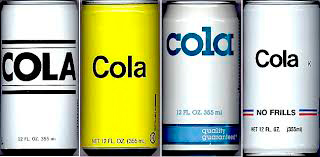
Image via Wikimedia Commons
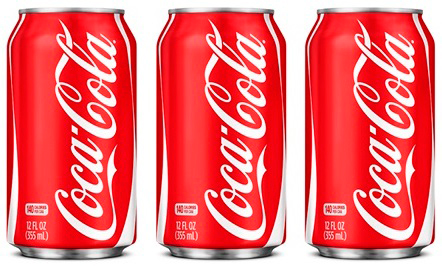
Image via The Coca-Cola Company
Which one of these pain relievers do most people reach for? And why?

Image via Columbia University Medical Centre

Image via Walmart
Or given the choice which one of these perfumes would most people prefer? And why?

Image via Wikimedia Commons

Image via Wikimedia Commons
Or insurance brokers?

Image via Wikimedia Commons

Image via Allstate Insurance
Related: 8 Huge Branding Trends in 2018, What’s New and Valuable?
The Un-Branded Generics
Cola, aspirin, cologne, and insurance are all useful consumer products. But none can stand on its own without communicating as a brand. A generic cola, aspirin, cologne and insurer lack the critical emotional factors that underpin and drive customer purchasing behaviour.
Nonetheless, the no-label packaging delivers a message in itself…if you’re thinking cheap lower price, you’re correct. A lower price is an excellent example of brand differentiation. However, pricing on its own is just one aspect of brand building and a race to the bottom unless you have very deep pockets and a very large mass market, high volume sales strategy.
To survive, grow and thrive, every brand needs an identity—and that is so much more than just a design, logo, and packaging. Here’s what is still missing so that your B2B or B2C product or service strongly stands out and resonates with your ideal customers, attracting them to purchase.
- Brand mission
- Brand meaning
- Brand values
- Brand positioning
- Brand personality
- Brand promise
- Brand story
- Brand purchaser personas
- Brand hierarchy structures
Do you want to make your brand stand out as a highly recognised, memorable and much-loved name? The Personality Profile Performer™ System is the perfect on-demand solution for you because it’s a step-by-step process empowering you to build your brand yourself and become more profitable. Get the Personality Profile Performer™ Programme here now so you can make your brand No.1 in your market. Discover more here.
Related: Brand Profiling, How Brand Performance and Purpose Are Inextricably Linked
Why Do I Need A Brand? How A Great Product or Service Delivers Via Branding
In the consumer product and service illustrations above, the branded products “talk” to us. There’s an emotional connection that goes way beyond the packaging. We feel we trust these brands and “know” them…and that our parents did, too.
Strong branding is underpinned by a compelling mission statement that defines the company’s purpose and standards. Examples as follows:

Image via Wikimedia Commons
- To refresh the world…
- To inspire moments of optimism and happiness…
- To create value and make a difference.
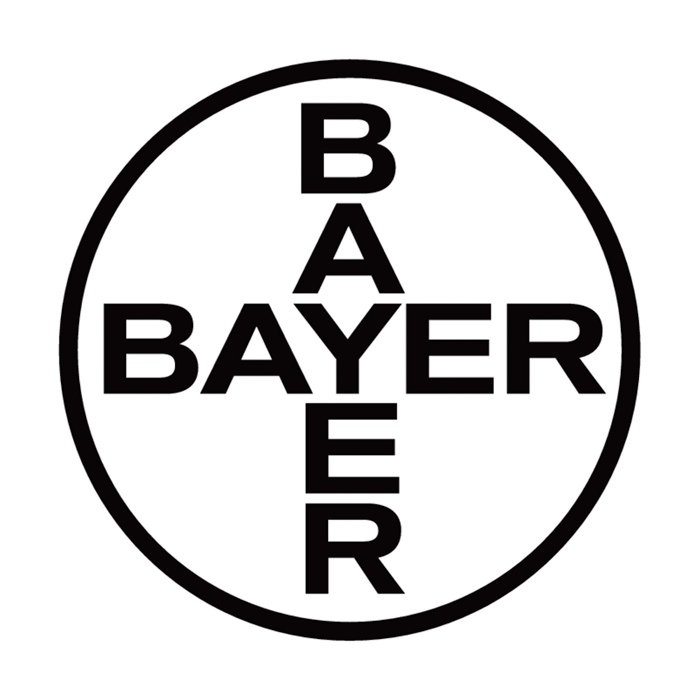
Image via Wikimedia Commons
Science for a Better Life

Image via Wikimedia Commons
“To be the Ultimate House of Luxury, defining style and creating desire,
now and forever.”

Image via Allstate Insurance
“To be the best…serving our customers by providing peace of mind and enriching their quality of life through our partnership in the management of the risks they face.”
Look closely at the logo for Allstate insurance. It symbolizes the tagline introduced in 1950 and in use ever since: “You’re in good hands with Allstate.” That’s a brand promise everyone can relate to.
Yet branding is so much more than just a mission statement or tagline. The answer to the question, “Do I need a brand or a visual identity?” is “Yes and yes to both.”
Small, Medium and Large Brands Matter
Size doesn’t matter. (Hint: But delightful customer experiences do matter.)
“Good stories give big voices to small ventures,” says digital marketing professional Neil Patel.[3]
At Persona Branding and Design, our mission is to empower business leaders, business owners and entrepreneurs to build their brands. And in working across multiple sectors with leaders in different countries around the world we sometimes hear misconceptions like this one: “Big names spend money on branding, small companies just get on with the job.”
Whether your team is in tech, retail, consumer goods, construction, professional services or another sector, your brand is your voice and it speaks for everything you do; your reputation depends on it.
In fact, your brand is your reputation. Jeff Bezos (founder of Amazon) says it is what people say about you when you are not in the room so your brand is essentially what people think and feel when they see or hear your name, engage with somebody from the organisation who in effect represents your brand and the experience that entails in meeting and exceeding your needs — or falling short!
All Brands Start Out Small
All products and services need a “why.”
For two Airbnb founders in 2008, that “why” was a need for cash which they met by renting out an air mattress on the floor of their apartment to two strangers who couldn’t get a hotel room during a big San Francisco design convention. Crazy idea?
Watch: The Story No One Believed – Brian Chesky, Co-Founder and CEO AirBnB
It has to start somewhere. The living room floor, a garage in Silicon Valley, or the back of a napkin in a coffee shop—like Harry Potter author JK Rowling— is as good a place as any for ideation.
Related: 10 Branding Tips From Silicon Valley on How to Be a Successful Startup Brand
Unicorns, those rare startups valued at over $1 billion USD (like Uber, Spotify, Airbnb), evolved from ideas to hugely successful global brands. Airbnb’s mid-2017 valuation was $31 billion USD.)
Related: Brand Disruption, Be the Disruptor or Be Defeated
“Unicorns often start as a brilliant technology solution to an unmet consumer need or they purposefully or inadvertently tap into a changing consumer trend,” counsels Kantar Millward Brown in their BrandZ annual report.[4]
Related: From Zero to Hero, How to Become a Must-Have Brand
Online and Offline Branding
As a small business owner or manager, you know that your community presence is far more important than it is for big brands that can rely more heavily on larger advertising budgets.
You may have a consumer-facing bricks and mortar establishment, you may trade as a B2B, or you may run a small internet business. Either way, you know how important a vibrant community, on and offline, together with word of mouth is.
Small businesses have lots of opportunities to connect with customers, building a strong brand through online and offline communities. And through their employees, too.
Related: The Age of Internal Branding and Selling It From the Inside Out
Having a great product or service is only the first step in the lifetime journey of your brand. Don’t stop the nurturing that brings your brand to life and enables it to grow.
As you can see, a brand is much more than a logo or just design. To build your standout, highly profitable brand, join one of our transformational workshops and masterclasses. These workshops are packed with content that enables you to define, articulate, and differentiate your brand, as well as put the latest branding trends to use for growing your business. Check out the Persona Brand Building Blueprint™ Mastermind here.
If you want some professional input, feel free to get in touch.
Questions To Consider — in Addition to “Why Do I Need A Brand?”
Ask yourself a few key questions about your product or service and the brand representing it.
- Does your product or service deliver an emotionally rich customer experience via its brand?
- If so, how does your brand use humour, hope, empathy, or another deeper connection to reach customers?
- Does your brand have unique attributes to set it aside from others in its segment?
- Does your brand answer the “why” question at its very core?
- Is your customer-facing team comfortable communicating your brand’s purpose?
[1] https://www.huffingtonpost.com/dave-bookbinder/what-is-a-brand-worth_b_9991720.html
[2] https://www.investopedia.com/terms/b/brand-identity.asp
[3] https://www.quicksprout.com/the-beginners-guide-to-onl
[4] http://www.millwardbrown.com/brandz/top-global-brands/2017/thought-leadership
If you’re looking for a DIY solution to build your standout brand, our Personality Profile Performer™Programme is the perfect solution for you because it empowers you to build a vibrant brand and inject it with meaning and purpose to drive customer purchase, all based on the latest developments in the branding industry. Discover more here.

Start building your standout, highly visible brand now with Lorraine Carter here
Top 10 Branding Articles in 2017 from Persona Design
/0 Comments/in Branding /by Lorraine CarterEver wondered what some of the most popular branding articles are amongst business leaders, business owners and entrepreneurs?
Sometimes we’re really surprised with what resonates most in these branding articles and other times the results are confirmation of our expectations because of our experience from working with clients across multiple different sectors, and indeed countries, over the last twenty plus years.
So here’s a peek, in case you missed them, of the top ten most popular branding articles in 2017. Take a quick look at the branding titles below because I know at least one will be very useful to you and your business in 2018.
1. Design Is NOT Branding: 10 Things Every Business Owner and Entrepreneur Should Know
Everyone knows that you mustn’t judge a book by its cover. Yet, the number one misunderstanding on what branding is all about typically comes from small and medium-sized businesses who often don’t understand the difference between design, marketing and branding because they don’t have access to big-brand ‘know-how’.
Branding is NOT marketing or design but the bedrock strategy supporting and directing your whole business.
The branding process provides the direction for design, marketing and the communications process that follows on from it. Branding comes before design.
Read on to get your SME/SMB Business Branding and Design Top 10 Tips Guide.
These 10 factors are what every business leader, entrepreneur and business owner should know about branding and design…in that order! Branding first, design second!
2. Four Reasons Why Your Business Profit Starts With Your Brand Mission
In just about any niche, competition is fierce. Yet many SME, SMB, mid-size to large companies neglect to develop and articulate their brand mission because they’re either not sure how to do it or don’t realise its importance.
This in effect means they have nothing of substance [beyond price fighting] to attract their ideal customers, whether their audience is B2B or B2C. Your brand mission is one of the critical deciders in captivating your ideal customers so they don’t go to or buy from your competitors.
Raj Sisojdia, a Babson professor, studied 28 companies between 1996 and 2011. His conclusion was that purpose-driven enterprises with a strong brand mission grew by a whopping 1647% compared to the S&P 500 average of 157%.
The best companies in the world understand the value of brand mission. It is your brand mission that impacts key decision making, strategic planning, productivity, service and brand strategy and marketing direction.
The real secret of incorporating your brand mission though is that it drives profit growth because your brand mission, and everything that follows it is what gives your brand meaning so it attracts the right people – employees and customers alike; those who believe what you believe. And when you tap into what’s important to the right people, you make considerably more money.
Here we take a look at;
- What brand mission means and why it matters
- What makes up a strong brand mission
- How your brand mission makes your brand stand out, drive increased sales and profit growth
We also take a close look at the brand missions of three very different companies and how their brands’ mission has been the real driver behind their growth and increased profits. In fact, in one case the rebranding strategy focus on the brand mission resulted in 49% increase in conversion rates and an 83% increase in lead form submissions on their website alone. Read on to discover more here.
3. The Impact of Company Brand Culture On Driving Performance and Increasing Sales
Most leaders and employees would view company brand culture as a crucial part of job performance and satisfaction coupled with great customer service, yet for so many brands it remains an elusive concept.
We all know intuitively that a bad company culture produces bad results and there are plenty of statistics to back this up. One Columbia University study shows that the probability of job turnover when a brand’s company culture is poor is 48.4%, compared to just 13.9% when the brand culture is perceived as a good one.
In fact, good corporate brand culture fundamentally drives increased financial performance as evidenced by the research published in the book ‘Corporate Culture and Performance’ by HBS Professor James Heskett and Kotter International.
Culture matters because it’s about transparency, company behaviour, what you stand for, who you are. Brand Culture is how you convey, share, and translate that into your brand. It’s what every employee believes, does, and lives to express that culture.
Our experience working with many different companies and organisations across diverse sectors clearly illustrates that it’s not that they haven’t considered company brand culture, it’s that developing and implementing something perceived to be so abstract can be difficult.
Because of this apparent client challenge we’ve pulled together some tangible ways you can start working on and developing your brand culture together with case studies from worldwide brands to show you ‘brand culture’ in action in the ‘real world’.
Check out here the 12 ways to improve your company’s brand culture so you increase performance and grow sales.
4. Use Psychology in Your Brand Strategy to Create Irresistible Brand Experiences and Increase Sales
Have you ever bought something you thought you really needed and it turned out you didn’t? Impulse purchases are common but people often don’t realise that it’s clever brand strategy tactics that have influenced their behaviour.
Psychology has been used by brand strategists and marketers for years as a core factor in their brand strategy to influence sales with great success.
So if your competitors are using psychology to underpin their successful results, why can’t you use it in your brand strategy too?
To make your brand truly speak to your audience so you can influence their purchasing decisions, be that B2B or B2C, psychology and empathy have to be built into the core of your brand.
Numerous studies have shown that people buy feelings and experiences, not things. Robert B. Cialdini, Anthony Robbins and Simon Sinek articulate on this masterfully in all their teachings. Outlining how your service or product solves a problem at a rationale level has minimal effect on people. On the other hand, creating a picture of a happy, stress-free life has a far more profound effect.
You can learn how to infuse your brand with a strong emotional appeal, tap into people’s subconsciousness and create an irresistible bond between your brand and your customers so you increase your sales.
In this article, we explore the science behind common psychological principles used in brand strategy together with why and how these principles work. We also take a look at ethical issues.
At the heart of all successful brands lie;
- 7 emotional psychological principles and
- 3 sensual psychological principles
Discover more here:
- What each of these principles are
- How and why they work, together with
- Areas of application
- Examples of brands large and small who’ve applied these principles very successfully and
- The ethics of using psychology in your brand strategy
5. Rebranding: 15 Do’s and Don’ts for Brand Success
Let’s be perfectly clear, changing a logo, altering the colour or even tweaking the name of your brand is not a rebranding strategy! Rebranding is much more than a design facelift.
Rebranding may result in the design of new logos and the creation of new brand names, but it all starts as with your brand strategy first long before anything else relating to design is considered.
Your rebranding strategy provides the direction for all your communications, positioning, language, messaging along with design.
And there are many strategic reasons to rebrand. A company may need to rebrand to:
- Re-establish its market prominence
- Acknowledge and reflect a major acquisition
- Announce a new technology or invention that changes its mission and vision
- Revitalize the voice and significance of the brand
- Refocus the company on major customer and/or industry trends
- Reflect a strategic move to reach new markets
- Give new life to flagging sales
- Move beyond a negative event
Whatever the reason, the key is to use your rebrand to help move your business and its products and services forward. Regardless of whether you’re rebranding a bank, hotel, power company, professional services firm or canned fruit, having the right strategy makes all the difference between failure and success.
To this end, we’ve compiled our list of 15 Do’s and Don’ts for ‘Rebranding Success’ in order to help you navigate your next strategic rebranding and focus on critical leadership and coordination issues.
We’ve been leading clients through all the various aspects of rebranding for more than twenty years so we want to ensure you engage in the process successfully by starting off on the right foot! Start here!
6. Brand Disruption: Be the Disruptor or Be Defeated
The average lifespan of a company is a fraction of the 60 plus years enjoyed following World War II, and it has been growing significantly shorter and shorter year on year, now closing in on barely 10 years which makes regular brand health checks even more critical to your brand’s survival.
Disruption happens. In the world of brands, standing still is not an option because a business that doesn’t innovate and change is a business that’s going to die.
Recent events at Whole Foods Market have reminded us that brands are living entities. While every brand has a different lifespan, as with all living things, youth fades and the peak of health simply cannot last forever — brand disruption happens regardless of your sector. Time for a complete overhaul?
Now Amazon, the giant online shopping service which disrupted retail, is disrupting grocery, which in the form of Whole Foods Market had once disrupted natural foods. In June 2017, Amazon filed a bid to acquire Whole Foods Market for $13.7 billion in cash.
Meantime, the planets are colliding in the home delivery business. Online groceries generated more than $15 billion in sales last year, which represented big growth but also represented a tiny fraction of the $1 trillion grocery market, according to Forrester Research.
Check out how disruptor Blue Apron became a $3 billion company in five years by delivering pre-portioned ingredients to customers’ doorsteps for around $10. a meal. An impressive story…until the disruptor became disrupted by the Amazon / Whole Foods deal.
7. Personal Branding: We Are All CEOs (Part 1)
How do others see you in the business arena?
What do others think when they hear your name?
Your unique personal brand isn’t a collection of past dates, facts, and accomplishments reflected on your CV. It’s your online and offline reputation, it’s how you interact with others, and it’s fundamental to whatever you do every day, whether you’re a student on campus, a globe-trotting CEO, or an office-bound downtown professional.
In short, everyone has a personal brand, whether they like it or not. To get the right personal brand, you must create it to your liking and nurture it.
Tom Peters, co-author of “In Search of Excellence: America’s Best-Run Companies,” a landmark business book, provides his thoughts on why we are all CEOs.
He suggests “We are CEOSs of our own companies: Me Inc. To be in business today, our most important job is to be head marketer for the brand called You.”
Personal branding is not an overnight task; it requires time and focus upfront as well as ongoing maintenance. Personal branding is not limited to the entrepreneur either — it applies to each and every one of us.
You can be a mini-celebrity within your own industry. CEOs, television presenters, marketing mavens, team sports figures, and popular professors are longstanding examples of individuals who have built personal brands from inside their place of work.
Or, you can create your own personal brand outside the corporate world.
Here we take a look at:
- What your personal brand profile is, the core essentials of what makes up your personal brand together with
- The key steps for building your personal brand and
- The ten personal branding mistakes to avoid
We’ve also included case studies of four very different personal brands for you take actionables learnings from.
8. The Age Of Internal Branding And Selling It From The Inside Out
Did you know strong internal branding is the best way to get employees to develop a powerful emotional connection to your products or services so they become your top performing brand advocates because effective internal branding increases sales?
That emotional connection with the brand and its culture is what drives more than two million people annually to apply to Google for a job.
When staff are emotionally vested in the brand, they’re more loyal, motivated, productive, innovative, fulfilled and inspired by a unified sense of purpose all of which enhances customers’ experiences and consequently increases sales.
By applying branding principles from the inside first, employees get a fuller knowledge of the brand and what’s important to it so they begin to “live” the vision of the company in their day-to-day tasks. And when employees live that vision in their roles the brand comes alive so your customers experience your brand’s promises to the full.
The 2016 Edelman Trust Barometer confirms that people trust what employees say about the company more than they trust what the company says about itself. Trust is central to every brand because, without it, people will not buy from you.
Think about it for a moment, 60% of branding is about perception and only 40% about your product or service so one of the most significant factors influencing customer choice is how they perceive, think and feel about your brand through their interactions with it — a key part of which is through your staff.
People buy with emotion first so it’s only when you touch the heart that you move the mind to make the purchase. It’s because of the positive emotional connection to your brand, through your staff, you transform your customers into committed fans, enthusiastic referral partners, word-of-mouth advertisers and repeat purchasers.
The ripple effect and network of influence per employee is extraordinary. It’s up to you to harness this for the greater good with strong internal branding so you can enhance your brand reputation and increase sales or, through negligence, be at the mercy of come what may.
At the very least make brand induction and training integral to what you do so you ensure your team is empowered, feeling and talking positively about your brand.
- the key brand induction factors your staff need in order to become powerful brand ambassadors so helping you increase your sales
- the common problems with internal branding
- the how of selling your brand from the inside out
- the role of communication in internal branding strategy
We’ve also included examples here of how three different companies in unrelated sectors have leveraged very innovative thinking in their internal branding strategy to grow their sales very successfully.
There are invaluable learnings and takeaways here you can apply to your internal branding strategy to grow your sales too.
9. From Zero to Hero: How to Become a Must-Have Brand
Want to scale from unknown generic entity or new fledgeling idea to a must-have brand? Apple, Starbucks and Barbie Dolls by Mattel did it and they all started from nowhere once.
There is no prescribed area for items such as smartphones, lattes, and plastic fashion dolls in Maslow’s hierarchy of human needs as described in “A Theory of Human Motivation” yet millions of us can’t live without them!
Every business has some sort of a brand, good or bad, whether it’s generically commoditized and barely making ends meet or a major local profit powerhouse coining it in. Make no mistake, branding is not just for global giants. It’s equally important for small local businesses too.
Regardless of the size of your brand now, whether it’s well established and ready to scale to the next level, in need of revitalisation to stay relevant and expand or an early-stage concept, every brand must have a well-thought-out strategy with strong brand foundations in place from which it can grow.
Before taking those very first steps, a number of essential, basic brand foundations must be in place to succeed.
Here we take a look at the 6 key foundational steps you need to go from Zero to Hero Brand.
10. Use Humour in Branding to Create Strong Emotional Bonds so You Increase Sales
Sorting through all the noise we’re bombarded with in the digital era is a challenge. It’s essential for a brand to avoid getting lost in the daily deluge as customers navigate information overload and a visual avalanche to focus on what’s most relevant.
That’s where building rapport and emotional connections come in, solving a digital age dilemma by using humour in branding as the delivery vehicle.
Strong content gets your customers’ attention and stops them overlooking, missing or skipping your messages, adverts, images or videos.
The top five reasons someone will engage with your content, be it a printed image, photo, online or offline advert or video are:
- Because an advert is funny
- It is for a category the recipient is interested in
- There is a reward, such as a coupon or points
- The advert is for a brand the consumer is interested in
- Something noteworthy happens in the first few seconds
Research tells us that when customers feel a genuine emotional connection with a particular brand, they generate disproportionate value for that brand. Those who are ‘fully connected’ emotionally are 52% more valuable to brands than customers who are ‘highly satisfied’.
The question is, have you considered using humour in your branding to make it more successful and increase your sales? It doesn’t have to be big budget either as evidenced by this hilarious Victor® Pest image above!
Find out the five key benefits of using emotion in your branding and how to use each of them very successfully to grow your sales here.
The combination of examples and case studies here will give you loads of food for thought so you can use humour successfully in your branding regardless of whether you’re selling a product or service, B2B or B2C.
Did your favourite post feature in one these top 10 branding articles of 2017? If there was an alternative that was your first preference, which one was it? Drop us a line or leave a note in the comments because we’d love to know.
Meantime I’d love to keep you up to date with what’s happening in the world of branding and ensure this blog is really useful to you. If there’s something in particular—branding related—you’d like to read about in this blog or if you have any questions or comments, suggestions for a blog post, feedback or even just to say Hi, then send a note to [email protected] because I’d love to hear your thoughts.

Build your standout brand at the Persona Brand Building Blueprint™ Mastermind with Lorraine Carter
We’re all busy and building the bedrock brand strategy supporting and directing your whole business may not be your top skillset. If you need professional input and want access to a detailed overview of the branding industry, book one of our transformational workshops, brand building intensives or masterclasses.
The Persona Brand Building Blueprint™ Mastermind empowers you to raise the visibility of your brand, reduce customer acquisition costs and position your brand as the №1 choice for your customers. Discover more here.
Design Is NOT Branding: 10 Things Every Business Owner and Entrepreneur Should Know
/0 Comments/in Brand Profiling & Positioning, Branding /by Lorraine CarterEveryone knows that you mustn’t judge a book by its cover. Yet, the number one misunderstanding on what branding is all about typically comes from small and medium-sized businesses who often don’t understand the difference between design and branding because they don’t have access to big-brand ‘know-how’.
- Don’t confuse branding strategy with asking a designer for a new logo
- Don’t ask for a website or product packaging first, because that’s not how to build the foundations of a solid standout brand
- Without brand strategy and brand codification to provide the foundation on which the brand is built, the pretty stuff is frequently a guaranteed waste of money
It’s understandable. People can get confused about what’s branding, what’s brand identity, what’s design, and how they’re all connected.
Simply stated, your logo and packaging is part of your brand design and your brand design is part of your brand identity, but your design is not your brand, merely its visual signpost. It’s kind of like: Located at the gateway to New York City, the Statue of Liberty is an iconic symbol of America, but America is not just New York City.

Image via Public Domain Pictures
Just as Lady Liberty lights the way, your brand identity design is a signpost that must clearly point the “way” for customers. Don’t let them get lost.

Image via Pixabay
Branding vs. Designing: First Things First
Let’s talk. It’s no good buying lovely china teacups for a party when you haven’t got a table to place them on…or anybody to invite to the party.

Image via Wikimedia Commons
“Through the Looking-Glass”: The first “Unbirthday Party” had it all.
In 1871, Lewis Carroll didn’t draw the picture before he wrote the book.
Getting the teacups doesn’t get you a party and creative design solutions doesn’t create a brand.
The branding process provides the direction for the brand design outputs and communications process that follows on from it.
Brand Building Foundations and StrategyBEFORE Design, Communications or Marketing Activities | |
FirstA brand must evaluate, identify, codify, map out and articulate what it stands for – to become highly visible, command a premium and give its customers a compelling reason to buy. The elements listed below are the GPS or roadmap for every brand because the outputs provide the direction for communications, design and marketing activities. | SecondDesign, visual content, text, sales scripts, campaigns and marketing activities are created to communicate the brand’s offering and attract its ideal customers to close the sale. The visual language expressing the brand in meaningful context can only be created once the factors that make it different, distinctive, memorable and likeable have been identified, codified and developed in stage one as listed. |
Website/Social Platforms | |
Copywriting Style and Language | |
Content | |
Graphic Elements | |
Signature Language / Voice | Photography / Illustration |
Video / Music | |
Advertising | |
Customer Journey and Experience | Brand Sales Scripts |
What is Branding?
Branding involves a wide range of fundamental concepts. Most importantly, your brand is the cornerstone and foundation that your business is built upon.
- It defines who you are
- It defines what you stand for
- It informs why you exist
- It explains how you’re different
What is Brand Design?
Brand identity design is the outward expression of an organization, product or service that includes its name, logo, and overall visual appearance.
- It is the fundamental means of customer recognition
- It is the first thing that your customer identifies with your company
- It symbolizes the brand’s differentiation from your competitors
- It communicates your uniqueness quickly and effectively
— Test Yourself:
What brands are represented here by designs that have done their job so well that actual brand names aren’t even necessary?
- How do these brands make you feel?
- What do you associate with these brands?
- What do you think about these brands compared to their competitors?

Image via Selfridges
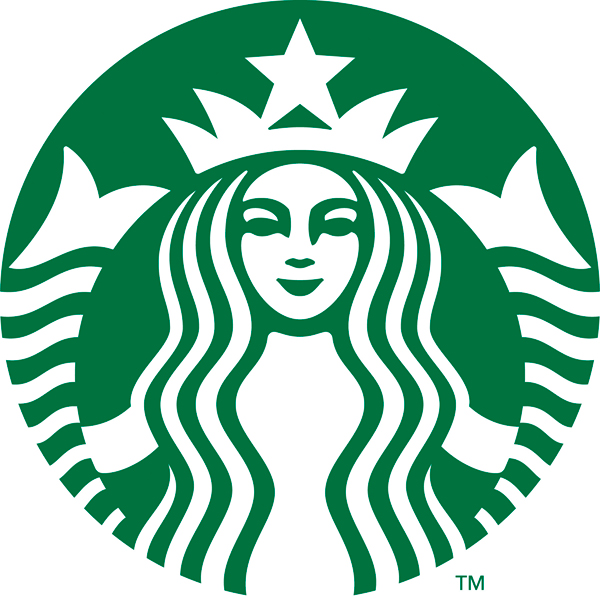
Image via Starbucks
Undressed: Strength of Branding
Looking at the green mermaid you can just smell the coffee brewing.
These pieces of packaging are just the visual identity of something much bigger. It’s really about the brand and what it stands for because even without wearing their logos these undressed brands evoke powerful feelings in us.
We perceive them fully in terms of the customer experience and their value due to price points and positioning versus their competitors.
If you’re struggling to develop your branding versus your design so you’re totally empowered to make your brand stand out and attract your ideal customers, feel free to get in touch and ask about our brand-building service. You will have absolute clarity over what makes your brand distinctive, different and memorable because our brand building process will enrich your brand with meaning so you can stand out, attract your perfect audience and build trust amongst your ideal customers. Meantime read on because the top 10 brand building tips below will enable you to develop your brand a lot faster and more effectively.
A Brand Refresh Provides Opportunity
If you’ve unintentionally taken a weak approach from the beginning, or circumstances have caused your brand to go a bit off kilter or underperform, don’t despair. A professional brand audit will identify areas of weakness, strength and potential opportunities for innovation and growth coupled with indicating whether a brand refresh strategy is in order for any number of reasons:
- Re-establish market prominence
- Acknowledge and reflect a major acquisition
- Announce a new technology or invention that changes its mission and vision
- Revitalize the voice and significance of the brand
- Refocus the company around major customer and/or industry trends
- Reflect a strategic move to reach new markets
- Give new life to flagging sales
- Amplify differentiation to stand out more strongly
- Adapt to maintain market relevance and changing trends
- Move beyond a negative event
If you’d like to give your brand a health check yourself then our brand audit health check programme, the Auditing Analysis Accelerator™ is the perfect solution for you. You can find out more here and watch a free preview here of how to give your brand a health check yourself.
Want to find out more?
Alternatively, if you’d like professional input and direction for building your brand and would like to leverage our experience and expertise then send us an email to [email protected] or give us a ring T: +353 1 8322724 (GMT hours 9:00 – 17:00). We’d be very happy to speak with you.
Related: Rebranding: 15 Do’s and Don’ts for Brand Success
Digital Adds a Layer to Branding Design
It’s tricky. According to the publication Co.Design, “It has never been harder to design a good visual identity. Brands live on dozens of platforms, so they have to look as good on a billboard as they do on a phone screen.”[1]
Related: Digital Brand Identity Essentials – How to Build, Resonate, and Grow
Your SME/SMB Business Branding and Design Top 10 Tips Guide
Keep in mind these 10 factors are what every entrepreneur and small business owner should know about branding and design…in that order! Branding first, design second!
- Design and branding are inextricably linked but distinctly different. When you leverage them both together properly, it’s a win-win. Branding provides the direction for design, not the other way round so branding and its strategy come before design is even considered.
To ensure the best return on your brand building investment, map out, codify and build your brand fundamentals first so that when you move to the design process you not only get great design, but standout design that reflects, communicates and expresses your brand appropriately in visual terms, because it’s the combined impact of brand strategy and design that creates a highly visible brand.
Only then does design become a leveraged commercial tool that truly supports your business growth objectives while also achieving a measurable return on investment.
- KISS: “Keep it Simple, Stupid.” If they cannot understand the brand (What’s it for? What problem does it solve for me? What does it stand for and why should I care?), they certainly won’t want to engage.
The KISS mantra has worked its way into every marketing rulebook because our brains act as filters to protect us from too much information. SME/SMB business owners must recognize when Too Much Information (TMI) is overload and bound to backfire by turning customers off. It’s essential to identify what really matters to your customers and then speak to them in their language without being overly complex.
Anyone who has ever entered an Apple store can see their clean, uncluttered, patented design and layout. It’s not possible to wonder what they’re selling. This approach to less is more has earned the brand the world’s number one retail ranking for sales per square inch.[2]
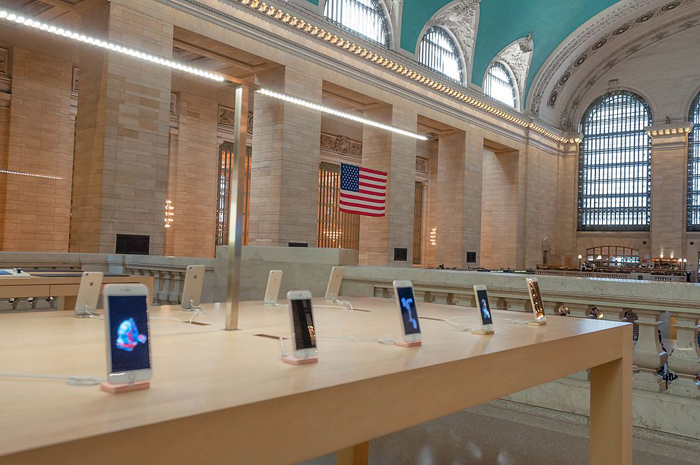
Apple Store at Grand Central Terminal, NYC (Credit: Marco Verch, CC)

A Woolworth’s closing sale (Wikipedia)
Woolworth’s, once a top international retailer, closed its stores in 2009.
In downtown San Francisco, a parking facility reminds us of what not to do with this jumbled up messaging. KISS lost its way…Needs simplifying, right?
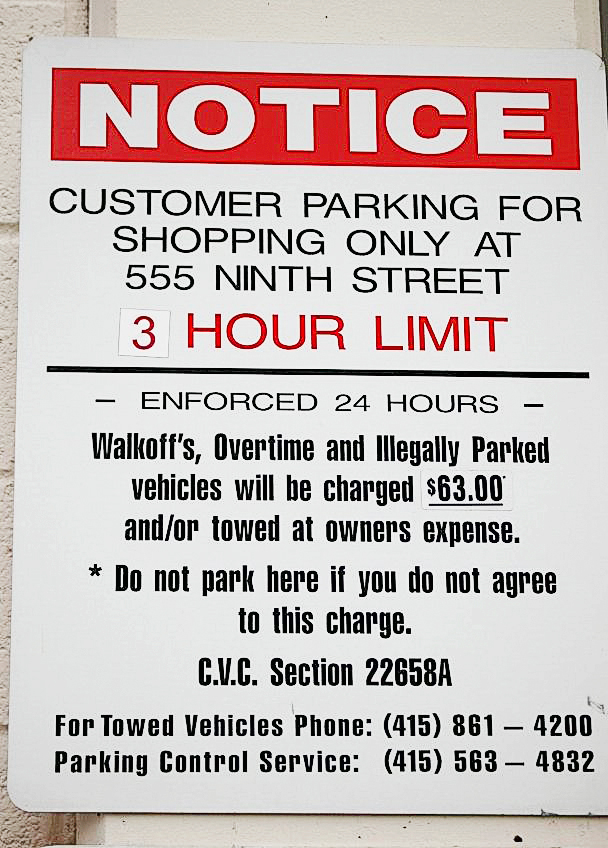
Image via Wikimedia
- Create a strong brand personality. This doesn’t mean creating a cute mascot for every product or service you sell or hiring a VIP or celebrity to be your brand advocate.
Part of brand building is your strategy for connecting with people: customers, yes. But also potential customers, stakeholders, suppliers, and employees alike. What works? Emotion. How to communicate emotion? Through brand personality.
Relatable, engaging, shareable, and often humorous are often interpreted via a persona, an ambassador, a celebrity endorser, a mascot, or an influencer.
Breathe life into your brand. Like people, strong successful brands are alive; they have a distinct voice, individualistic traits, characteristics, and personalities.
Related: Personality Matters: Bringing Your Brand to Life to Grow Profits
Charlie the Tuna was one of the first brand characters (he talked!) created for television in 1958. The dapper, yet cheeky, fish propelled StarKist tuna with a tagline, “Sorry Charlie®” that made its way into the national lexicon. Why? Because “StarKist®doesn’t want tuna with good taste, but tuna that tastes good!”
Along with icons that have endured for decades: the Jolly Green Giant, Morris the Cat, and Ronald McDonald, Charlie made it into the “Salute to Advertising’s Greatest Icons” exhibition at the Museum of Broadcasting in Chicago. See Charlie’s timeline here.
Let the Persona Brand Building Blueprint™ Mastermind be your guide. It’s a highly interactive fast-track programme where you work intensively on your brand alongside other senior managers over the course of two days to codify it, map it out, and build your brand strategy to take your business further, faster. One of the key outcomes is it provides the direction for all your design, marketing and communications campaigns. Discover more about the mastermind here.
- Differentiate to Stand Out. Brands must address positioning in the marketplace as a foundational aspect by identifying their differentiation and unique selling points. Among these are:
- Price
- Expertise
- Distribution
- Purpose
- Heritage
- Innovation
- Storyline
- Convenience
- Delivery
- Quality
- Limited edition
- Personalization
- Customer experience
Related: Brand Differentiation, 30 Ways to Differentiate Your Brand
How one or more of these strategic differentiators translates via design identity is critical to getting the message across to your ideal primary customer so you can attract them to your brand and give them a compelling reason to buy.
- Tell Your Story. Behind every great brand, there’s a great story...or two.
Are you sharing yours? Can you clearly articulate not only what your brand stands for, but also where it came from and how it got to where it is today? What’s your brand’s big “why” and how are you telling that story?
What gets you out of bed in the morning? What’s your inspiration, what’s your vision? How are you translating your unique story and message into something your ideal customer finds irresistible?
Ikea History: How It All Began
Many of the world’s top brands were started by ordinary people with extraordinary ideas and big visions. And being small is a story in itself!
Related: Brand Stories: 5 Compelling Examples That Sell Themselves
- Use Emotion, Use Humour. Quick! Name your favourite commercial of all time. According to consumer research, chances are 71 percent that “funny” is the primary reason you remember the product that advertisement represents.
Be subtle or be outrageous. Tweak a smile or provoke downright belly laughter. Carefully choose the tone of voice that suits your brand or get professional help to do it right.

Build Your Customer Attracting Brand Using The Personality Profile Performer™ Programme with Lorraine Carter
Related: Use Humour in Branding to Create Strong Emotional Bonds to Increase Sales
- Know Your Audience. This is the same advice you’d give to anyone about to make a speech, perform well in an interview, or host a meeting. It’s essential for a brand to know who they’re talking to and where to find them. After all, it’s no good having a great looking resume if you’re applying for a job that’s been filled or designing an amazing slide presentation if the event is held outdoors.
To build your brand effectively you must understand your customers intimately, their needs, wants, loves, hates and aspirations so you can build your brand to really meet their needs — and so they are naturally attracted to it because they find it irresistible.
Consequently, designers must accurately interpret the fully codified and mapped out brand by using the direction it provides to create the appropriate visual communications for a look and feel that will appeal to and attract the ideal target customer and stand out strongly from its competitors.
In 2000, they made a romantic fantasy comedy film about understanding your target customer in ‘What Women Want’. Don’t underestimate the importance of this, understanding your audience has profound implications for your brand strategy.

Image via Flickr, Jonathas Scott
After a freak accident, a chauvinistic, alpha male ad executive gains the ability to hear what women are really thinking.
- Develop Tone of Voice and Be Consistent. A tone of voice embodies the brand personality, captures its spirit, and expresses its values.
What does your brand sound like? Is it trendy and young or established and mature? Is it informal and goofy or serious and informative? Is it sophisticated to pair with a luxury brand or masculine to suit a consumer item for men? Does the tone and voice match the brand product or service?
Related: How to Develop Your Brand Tone of Voice to Increase Sales
Some 55 million views later (on YouTube alone), “Here’s the guy that every man in the world wants to smell like,” says Ellen DeGeneres.
Watch IKEA reach professional young urban dwellers, not with a product hard sell, but with an influencer’s tips for hosting a Friendsgiving to replace the traditional family-oriented Thanksgiving.
Designers must be aware that consistency across all platforms and channels is essential. In my experience of working with many different brands across multiple sectors over twenty years, this is one of the biggest and most common failings amongst SME/SMB brands.
Consistency is critical to success because it engenders trust so if your brand is inconsistent in its communications and how it portrays itself you’re actually undermining its authority and the trust your primary customers will have in your brand. Without trust people won’t buy from you so consistency is critical to building trust so you can increase your sales.
These days, cross-device is a catchword being bandied about, as consumers access brand message – sometimes simultaneously – on various hardware as well as multiple channels. This explains why some of the most popular tweets in history are connected to some of the largest audience television broadcasts, such as the Academy Awards and the Super Bowl.

Image via Twitter
Related: Using Video to Broadcast Your Brand Message So You Attract Your Ideal Customers
- Reach Every Touchpoint. Every brand has a customer experience that begins well before the point of purchase. Importantly, as the customer navigates the sales funnel, key touchpoints determine whether the sale will take place.
Brands must fully understand their customer journey when mapping out their brand strategy; designers must deliver its look and feel through the visual communications.
Google Shopper Sciences, IBM Global Business Services, and EY Global Consumer Survey provide this infographic of a customer’s roadmap to a car purchase.
Related: Top 10 Brands for Customer Experience and What You Can Learn From Them
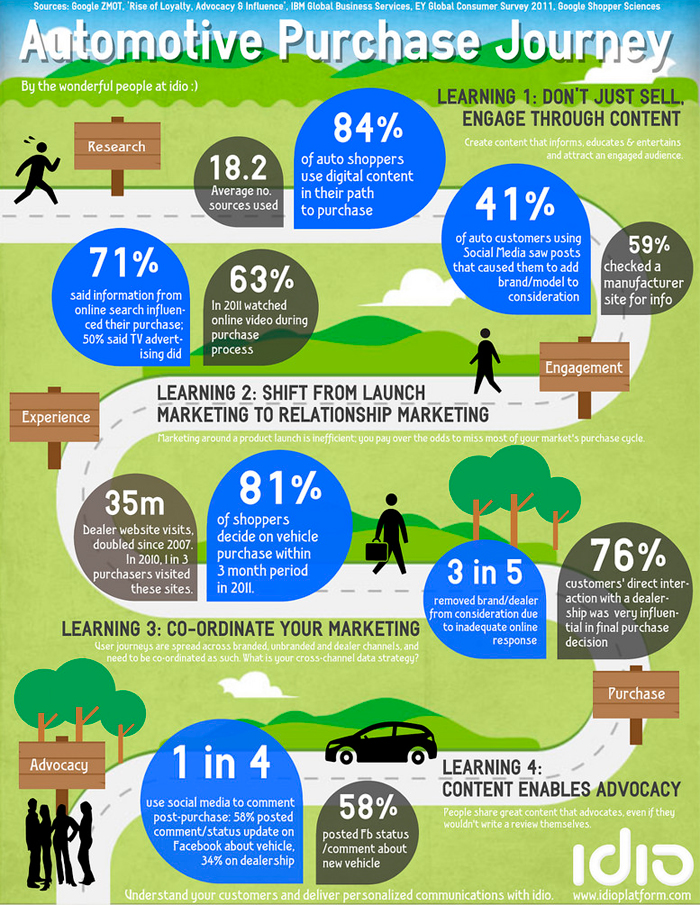
Image via Flickr, Digital Ralph
- Be Authentic. This means demonstrating and delivering on a brand’s values, credibility, and promise. Honesty is the strongest positioning for any brand. And without honesty, there cannot be confidence. Without confidence, there cannot be loyalty.
In a global survey, PR agency Cohn & Wolfe indicated 87 percent of consumers say it’s important for brands to “act with integrity at all times,”[3] reported AdWeek.
Watch the former CEO of Avis discuss the birth of the “We Try Harder” campaign.
The world’s #2 car rental company designed a classic underdog ad campaign in the 1960s, but Robert Townsend explains that without meeting brand promise for customers and sharing the brand culture with employees, the campaign would backfire and kill the brand forever.
As a brand evolves and grows, a brand health check ensures you keep your finger on the pulse because it enables you to keep track of potential strengths and weaknesses together with opportunities for innovation and growth — and when needed it identifies when a brand refresh is required before your brand hits a downward slope.
“Being honest, insightful, realistic, and open to change will enable you to develop and deliver an authentic brand that truly connects with internal and external audiences. Consider your brand a work in progress, even if you think you’ve got it figured out.”[4]
Ask Yourself These Questions:
- Does your brand have all its pillars in place and are its foundations strong?
- Does your brand embrace storytelling as part of its differentiation?
- Are you monitoring the life cycle of your brand itself, or just its visual identity?
- Has your team grasped the difference between branding and design?
- Are you aware of how your customers view your brand on authenticity and on delivering its promise? Is your brand fully aligned between internal and external perceptions?
- Are you delivering a strong, consistent message across all customer touchpoints?
[1] https://www.fastcodesign.com/3066401/the-best-and-worst-branding-of-2016
[2] https://9to5mac.com/2017/07/29/apple-top-retailer-per-square-foot
[3] http://www.adweek.com/digital/the-20-most-authentic-brands-in-the-us-and-why
[4] http://www.chiefmarketer.com/the-art-of-authenticity-in-branding
Purposeful Brands: Why Customers Are Prepared to Pay More
/0 Comments/in Brand Mission, Brand Profiling & Positioning, Brand Purpose, Brand Strategy, Brand Values, Branding /by Lorraine CarterA quick answer please, if you can, to this question: “What does your brand really stand for?” in other words “What’s your brand purpose?”
If you hesitate to succinctly define the mission, vision, and values behind your brand – the primary raison d’être for your brand’s existence — your brand purpose — you can be certain that customers and potential new customers are missing the point entirely too. This is why it’s critical to codify and map out your brand so you are highly visible, stand out, can clearly articulate your brand purpose and deliver an unforgettably great customer experience.
In other words, if customers can’t meaningfully differentiate your brand from your competitors they will default to decisions based on price alone and they won’t pay a premium.
Because…when brands give, brands get.
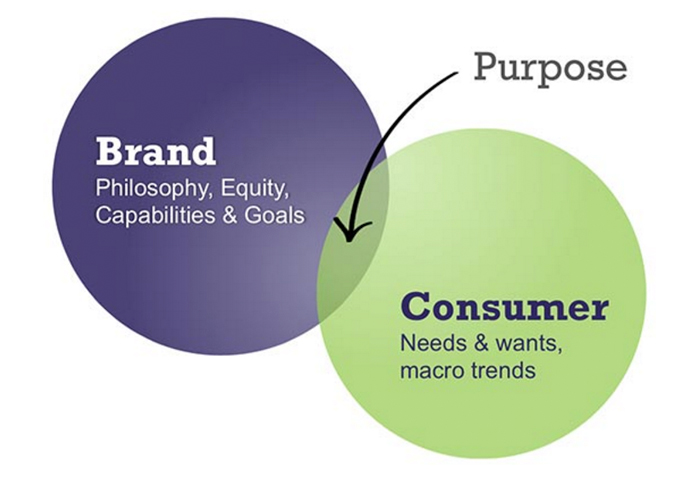
Image via Harbinger Communications
Who Decides and Defines: What is Brand Purpose
Mind you, it’s not as easy as it sounds. In 2014, according to The World Federation of Advertisers, consumers and marketers can be confused by the meaning and focus of brand purpose.[1]
“There is consensus that brand purpose is increasingly relevant,
but people and marketers don’t seem to agree on what it means.
Marketers see it as the bigger picture,
but people see it as what you do in daily life.” –
Stephan Loerke, managing director of the WFA
Where it Matters Most: Brand Purpose
Around the globe, consumers value brand purpose to varying degrees. Responses to whether consumers are willing to pay a premium for a product that supports good causes find Chinese with a very different view than Britons.[2] Nevertheless, this survey result means that even at the low end of the scale, more than one in four would loosen their purse strings for a brand with purpose.
| China | 80% |
| India | 70% |
| Brazil | 55% |
| Malaysia | 55% |
| USA | 39% |
| UK | 28% |
The concept of brand purpose is sometimes overlooked, or not clearly communicated, by small to medium-sized business owners and managers largely because the serious impact it has on accelerated business growth is not fully understood. Brand purpose can get lost in the frenetic pace of a busy startup. So it’s really important to underscore the huge influence brand purpose has on business outcomes, re-define the concept, and demonstrate its influence in commercial terms as the major driver behind perceived value, premium price points and higher sales.
Related: 10 Branding Tips From Silicon Valley on How to Be a Successful Startup Brand
Why Brand Purpose Matters
What do consumers think: Edelman’s brandshare studies[1] reveal that 92 percent of 11,000 consumers surveyed in eight countries want brands to share their values more effectively. Overall, 40 percent don’t think brands are doing enough to communicate and demonstrate purpose in “helping the world” in some way.
Related: Brand CSR: The Business Case for Successful Branding and Social Good
What do executives think: In a study issued by EY Beacon Institute and Harvard Business Review[2], 85 percent of the 474 business executives surveyed indicated they strongly agree they’re more likely to recommend a company with a strong purpose. They also strongly agreed, at 80 percent, that a company with shared purpose will have greater customer loyalty.
Related: CEO Brand Leadership: How Vision Drives Brand Growth
See the results in two diagrams: Brands that prioritize brand purpose benefit from stronger growth.[3]
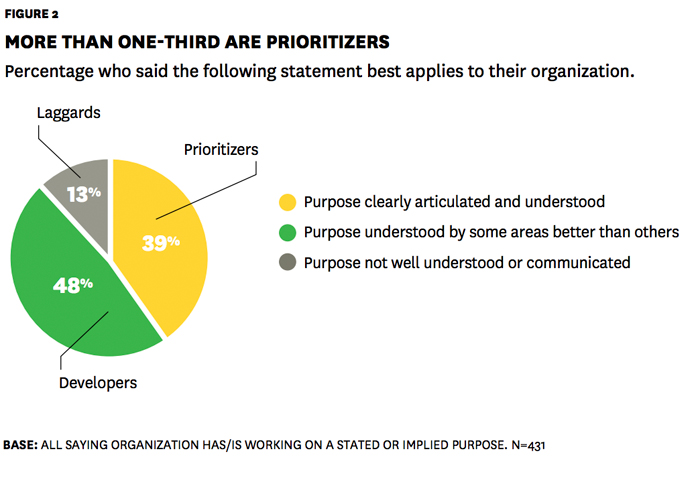
Image via Harvard Business Review
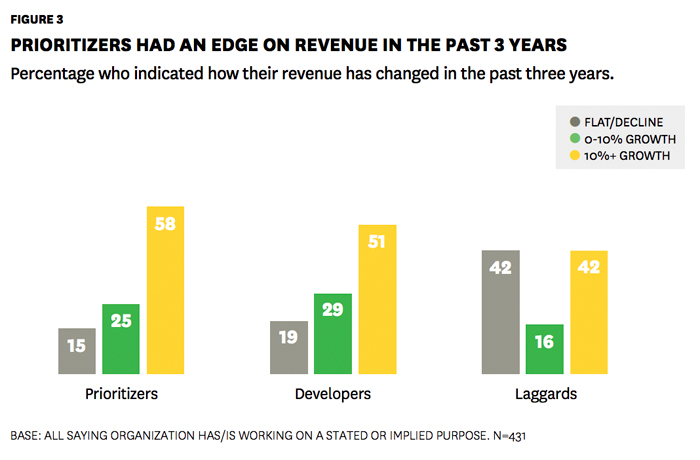
Image via Harvard Business Review
Defining Brand Purpose
What does this all mean? Brands with clarity of purpose outperform brands who lack it. To survive, brands must live and breathe through their core values because these are the fundamentals differentiating a brand from all its competitors so it stands head and shoulders above all the rest — and consequently commands a premium.
Author Simon Sinek sums the lessons from his book, “Start With Why” in his famous TED Talk about communicating brand purpose.
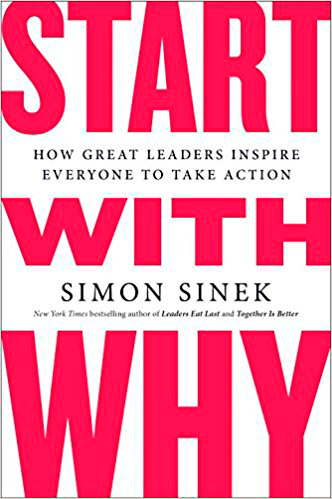
“People don’t buy what you do. They buy why you do it.”
– Simon Sinek
Sinek goes on to say, “The goal is not to do business with everybody who needs what you have; the goal is to do business with people who believe what you believe.”
Brand Purpose and Customers
The underlying message is that emotion drives purchase. Brands can engage primary customer emotions through articulating what the brand stands for, that is, purpose equals its mission, vision, and values.
The brand must reinforce this and bring it to life via experiential terms, such as customer service and brand touchpoints.
Related: Top 10 Brands for Customer Experience and What You Can Learn From Them
Be Different, Be Transparent Through Brand Purpose
Brand purpose is also a primary factor in brand differentiation because when it is sufficiently strong and compelling, it makes a brand highly visible and different compared to every competitor.
Simplistically speaking, if a brand’s purpose is aligned with the values of its ideal primary audience, those customers will naturally be attracted to it and want to buy it. People reward brands that openly share their values when those values are transparent. “Do we believe in the same things?” is what a customer wants to know. However, it is not the customer’s job to dig deep for that answer.
If brands don’t stand up for what they stand for — and diligently communicate it — nobody knows what the brand purpose is all about.
Brands with a purpose command the customer’s attention because, price point aside, a meaningful, emotional connection is valuable to the purchaser.
Related: Personality Matters: Bringing Your Brand to Life to Grow Profits
Whether a giant corporation or small business owner, it is critical to identify your brand purpose. Are you entrepreneurial? Find out what you truly stand for as an entrepreneur. Determine how to embody this purpose and communicate it to everyone your brand interacts with, including employees. You will enjoy higher profits while making your lasting mark on the world.
Related: The Age Of Internal Branding And Selling It From The Inside Out
If you want direction and support empowering you to transform your brand so you stand out with a strong brand purpose and increase your sales then the Persona Brand Building Blueprint™ Mastermind is the perfect fit for you.
This is a two-day brand building intensive shared with a small group of like-minded peers where you work on your brand with our leadership. In fact, over the two days, you reevaluate your brand, codify it and create your brand purpose and strategy to stand out and attract your ideal customers whether you’re revitalizing an existing brand or creating a new one.
At the end of the two-day Persona Brand Building Blueprint™ Mastermind you leave with absolute clarity on your brand purpose and your fully documented brand strategy ready for implementation in your business or organization.
This is not a theory based programme but a highly interactive fast-track programme where you work intensively on your brand throughout the two days duration, under our tutelage, using our ten step system to:
- Completely re-evaluate your brand to make it much stronger so it’s highly visible enabling you to increase your profits
- Map out your brand in full so it’s codified and comprehensively documented to grow your business faster
- You leave with your total brand road map or GPS of your brand empowering you to manage your brand, stand out and attract your ideal customers so you multiply your sales
Outcome: Your brand transformed so you can increase sales.
If your team is larger and you’d like to include everyone’s’ participation in the Persona Brand Building Blueprint™ Mastermind then we also run in-house private client brand building intensives tailored to your bespoke requirements so you’re empowered to take your business further a lot faster.
Want to know more?
Give us a call T: +353 1 8322724 (GMT 9:00 – 17:00) to find out more and discuss your preferences or send us an email to [email protected]

Codify and build your highly visible, profitable brand at the Persona Brand Building Blueprint™ Mastermind with Lorraine Carter
Examples of Explicit Brand Purpose
Dove and Levi Strauss are two brands that articulate brand purpose extremely well, fueling the emotional factors that drive purchase decisions.
Here we delve into these two examples of successful brands whose achievements and prosperity are largely underpinned by very compelling brand purpose. While these are not small business examples, there are reasons tied to brand purpose that explain how these companies grew larger and more profitable because of their strong brand purpose.
Related: 4 Reasons Why Your Business Profit Starts With Your Brand Mission
Brand Purpose Example: Dove Beauty Bar
It’s been over a decade since Unilever launched the groundbreaking “Campaign for Real Beauty” for Dove.
Brand Purpose: “To educate and inspire girls and women to embrace a wider definition of beauty.”[4]
Dove Real Beauty
“You’re more beautiful than you think,” was one early example. Following 19 million views on YouTube alone, its purpose of making women feel better about themselves launched the Dove Self-Esteem Project.
Result: “Since the inception of the Campaign for Real Beauty we have seen a significant positive shift in brand perception…Dove is seen both as a leader in the personal care company, as well as a leader in the Real Beauty conversation.”
Dove has achieved a return on investment that cannot be measured solely in uplift in the sale of bars of soap, although that’s occurred as well. Just ask one of their 27 million followers on Facebook.
In 10 years, the campaign, which Ad Age tapped as the best of the 21st century, has reportedly helped boost Dove sales from $2.5 billion to $4 billion, says the publication.
Dove Says:
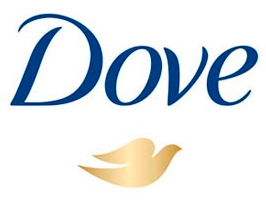
Image via Dove
“…11 years since we launched the Dove Self-Esteem Project, more than 625,000 teachers have delivered a Dove self-esteem workshop and more than 1.5 million parents have engaged with our online content. We’ve already helped 19.4 million young people in 138 countries. But we won’t stop there. Our global mission is to reach 20 million more by 2020.”
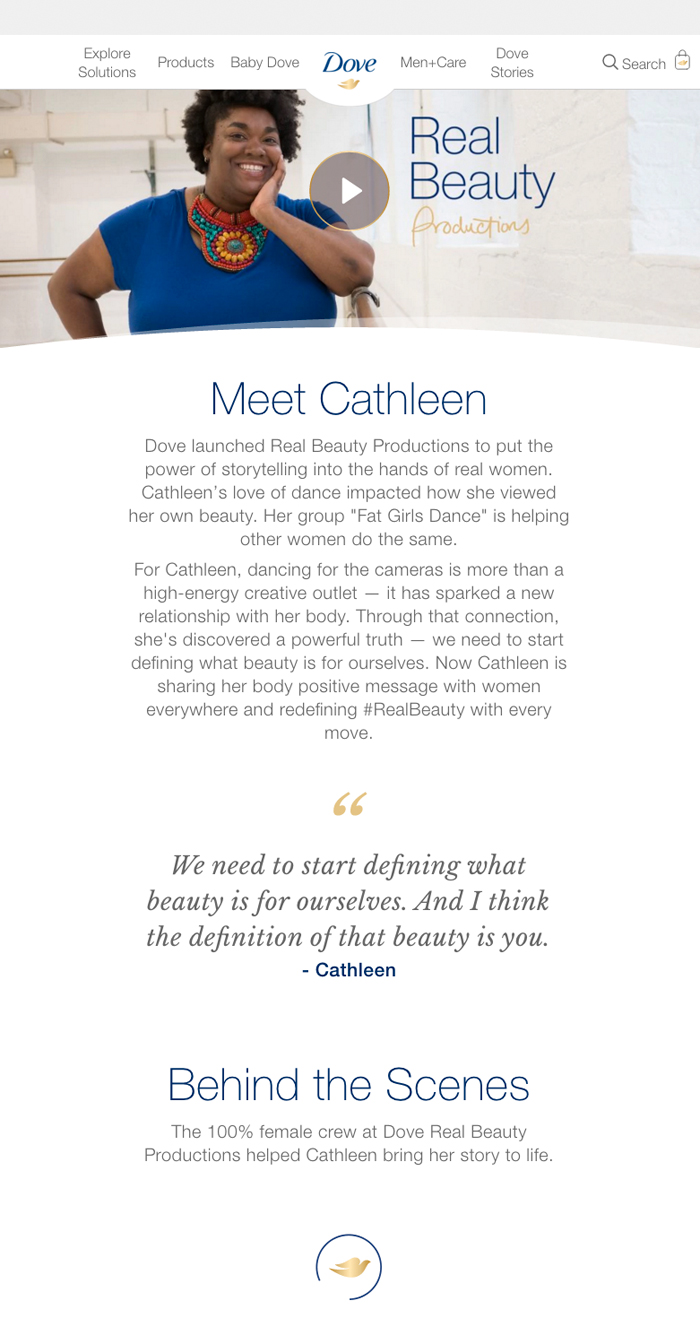
Image via Dove
What’s Next: Dove Real Beauty Productions launched in 2017 to bring touching real stories from real women to life in mini-videos. Meet Kylee, Meet Cathleen, and so on present revealing self-portraits, bravely challenging narrow definitions of “real beauty.”
How Much: At 6 bars of soap for $6.88, Dove Beauty Bar isn’t a costly item. But, $4 billion is a lot of soap. Clearly, women drawn in by the self-esteem campaign haven’t been concerned about getting another brand of soap for a few cents less.
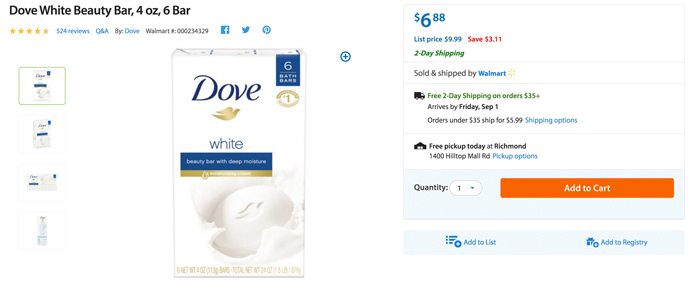
Image via Walmart
Brand Purpose Example: Levi’s
In the mid-20th century, former CEO Walter Haas articulated Levi’s brand purpose: “Each of us has a capacity to make business not only a source of economic wealth but also a force for social and economic justice.”
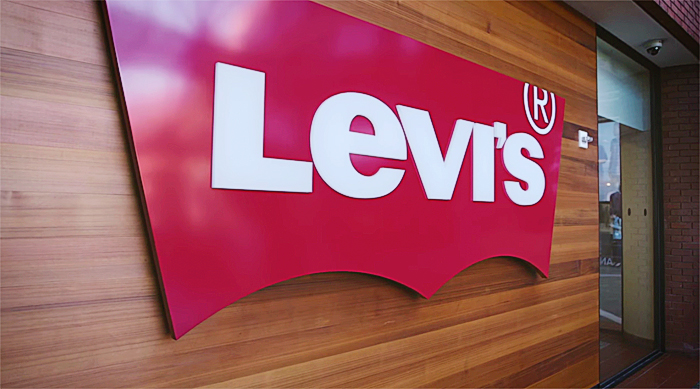
Image via Levi Strauss & Co.
Levi’s History: A brand’s history is “secretly seductive,” suggests Edelman. It can help to define purpose, as in why was the brand born in the first place? In the case of Levi’s, that answer is embedded in immigration, the nation’s westward expansion, family business, the determination and grit of its early nation builders, coupled with the boom of California Gold Rush days.
Related: Family Business Branding and The Secret Drivers to Brand Success
Manufacturing the world’s first blue jeans in 1873, Levi Strauss had an instant hit, creating durable, tough pants that miners needed to withstand the wear and tear of the job. Brass rivets were added to the pockets.
Giving Back: Due to the early success of the company, a commitment to giving back to the community began in the mid-19th century with support for an orphanage. Three decades later, the 1906 San Francisco earthquake and fire destroyed Levi’s headquarters and two factories along with 80 percent of the city. The company responded by extending credit to its wholesale customers so they could get back on their feet and back in business.
Related: Brand CSR: The Business Case for Successful Branding and Social Good
The Levi Strauss Foundation

The Levi Strauss Foundation started with a 1897 donation to the University of California. From worker’s rights to environmental sustainability, the foundation continues its San Francisco Bay Area local commitments while making positive, major worldwide impact.
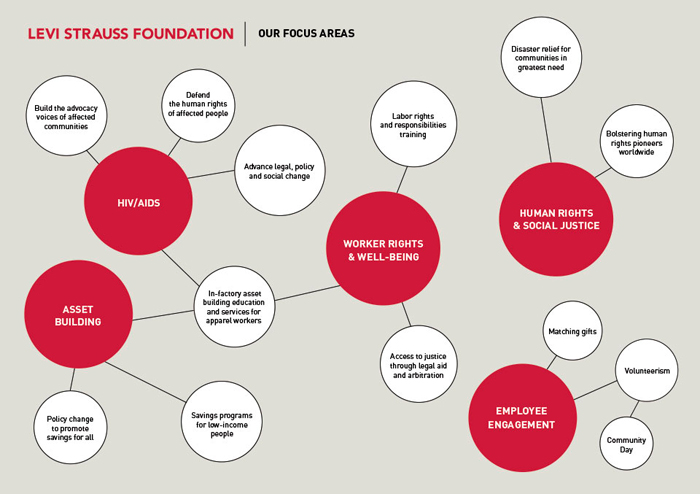
Image via Levi Strauss Foundation
Levi Strauss & Co. Says: Giving back never goes out of style. “We’re well-known for doing things that are right, that may be difficult…” says Tracey Panek, the company historian.
Levi’s Core Values endure and help shape the brand culture in a positive way.
- Empathy — walking in other people’s shoes
- Originality — being authentic and innovative
- Integrity — doing the right thing
- Courage — standing up for what we believe
Related: The Impact of Company Brand Culture On Driving Performance and Increasing Sales

La Cocina is a commercial kitchen incubator for low-income women in San Francisco. It gives them “access to financial, marketing and business opportunities that will allow them to transform their passion into full-fledged livelihoods for them and their families,” explains Levi Strauss Foundation, which supports the cause.
Articulating Brand Purpose: In 1990, the Harvard Business Review interviewed Robert D. Haas, then Chairman and CEO, the great-great-grandnephew of the company founder whose uncle, father, and grandfather all led the company before him.
At that time, he explained what the company had learned from its century-long tradition for social responsibility and how that reputation is inextricably linked to Levi’s success.
“In the past, however, that tradition was viewed as something separate from how we ran the business. We always talked about the “hard stuff” and the “soft stuff.” The soft stuff was the company’s commitment to our work force. And the hard stuff was what really mattered: getting pants out the door.
What we’ve learned is that the soft stuff and the hard stuff are becoming increasingly intertwined. A company’s values—what it stands for, what its people believe in—are crucial to its competitive success. Indeed, values drive the business.”
– Robert D. Haas
In the ongoing story of “Who We Are,” Levi Strauss shares its message about “not just in what we do, but how we do it.”
How Much: Nobody ever said Levi’s 501 are the least expensive jeans. An average pair of purchased in San Francisco in mid-2017 is $67. You can certainly get jeans for less.
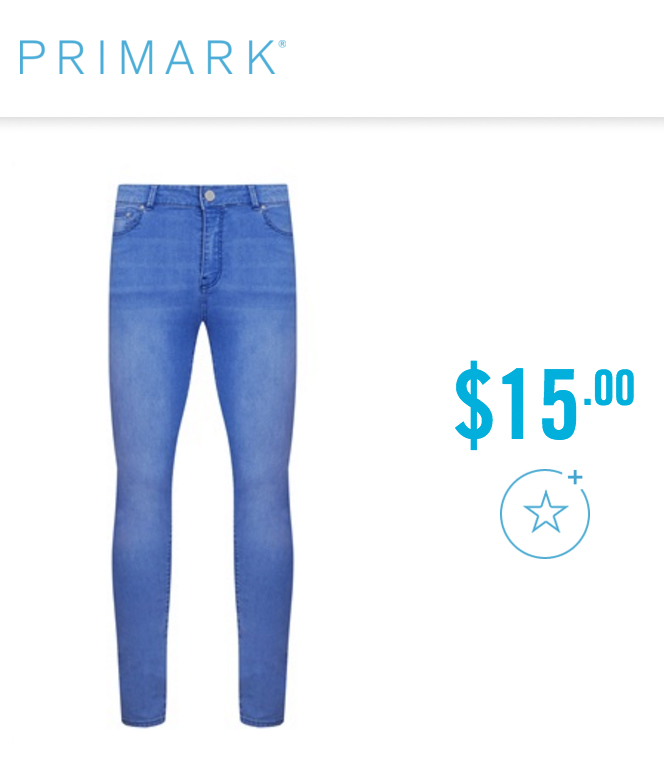
Image via Walmart
Financial Results: Levi’s financial results have been extraordinary over its 160 year lifetime. The 2016 Annual Report indicates that net revenue was $4.6 billion, representing 3 percent growth worldwide over the previous year.

Image via Levi Strauss and Co.
How to Build Your Brand’s Purpose
When working with our private clients we use the Personality Profile Performer™ System to develop key brand foundational elements for their brands. The outputs from the Personality Profile Performer™ then provide you with your brand blueprint or brand roadmap, together with the brand direction for your brand design application in brand collateral, brand communications strategy, training and so forth.
If you want direction developing your brand so you can increase your profits then take a look at our online brand building eprogramme called the Personality Profile Performer™. This online course takes you through all the key steps you need to implement as you build your brand, including your brand purpose. You can watch a free course preview here.
Notice that purpose is one of the key building blocks for a strong brand foundation. This part of the brand foundation provides the critical direction for brand strategy, and consequently, for high performance with the laser-focused results marketers seek. Here we aim to show you how a well-defined brand purpose is inextricably tied to stronger brand performance that commands a higher price point.
Alternatively, if you’d like professional direction to develop your brand purpose and would like to explore working with us then send us an email to [email protected] or give us a ring T: +353 1 8322724 (GMT hour 9:00 – 17:00). We’d very happy to speak with you.
Related: Brand Profiling – How Brand Performance and Purpose Are Inextricably Linked
Questions to Ask Yourself:
- Would you pay a premium for these brands? Can you see why people do?
- Is your brand purpose well defined and well articulated?
- Can your customers express your brand purpose? Can your employees?
- Does your brand purpose reflect authenticity?
- How does your brand demonstrate its brand purpose across multiple customer touchpoints?
- Is your brand focused on creating purpose that commands your customers’ attention and discretionary spend?
[1] https://www.edelman.com/insights/intellectual-property/brandshare/about-brandshare
[2] http://www.ey.com/Publication/vwLUAssets/ey-the-business-case-for-purpose/$FILE/ey-the-business-case-for-purpose.pdf
[3] Ibid.
[4] https://www.facebook.com/pg/DoveUS/about/?ref=page_internal
[1] http://adage.com/article/global-news/marketers-confused-meaning-focus-brand-purpose/292325
[2] Ibid.
4 Reasons Why Your Business Profit Starts With Your Brand Mission
/0 Comments/in Brand Culture, Brand Mission, Brand Profiling & Positioning, Brand Strategy, Branding /by Lorraine CarterIn just about any niche, competition is fierce. Yet many SME, SMB, mid-size to large companies neglect to develop and articulate their brand mission because they’re either not sure how to do it or don’t realise it’s importance.
This in effect means they have nothing of substance [beyond price fights] to attract their ideal customers, whether their audience is B2B or B2C. Your brand mission is one of the critical deciders in captivating your ideal customers so they don’t go to, or buy from your competitors.
When you’re clear on your company’s brand mission, it acts as the overall steering mechanism of the business.
The best companies in the world understand the value of brand mission. It is your brand mission that impacts key decision making, strategic planning, productivity, service and brand strategy and marketing direction.
The real secret of incorporating your brand mission though, is that it drives profit growth because your brand mission and everything that follows it is what attracts the right people – employees and customers; those who believe what you believe. And when you tap into what’s important to the right people, you make considerably more money.
Related: 6 Tips For Building Your Profit Growth Plan
What Does Brand Mission Mean?
Branding is all about human psychology and perception. It consists of different levels, like the brand vision which drives the other elements, including the mission. Brand mission answers the question of, “how do we achieve our brand vision?” It is the “who we are and what we do” of a company.
Let’s get one thing clear from the start though, your brand mission is not a dusty mission statement hanging on the corporate wall. Rather, it’s how the company carries out its mission.
The biggest benefits of developing a clear, strong brand mission are:
- Recognition. Even if your business slots into the small to medium sized, having consistent messaging, tone-of-voice, language, personality, look and feel makes it much easier to attract and remain front-of-mind in your ideal target customer.
- Professionalism. Branding your business makes you appear better, larger and more successful. It makes you more trustworthy, and trust is what makes people ultimately decide to buy.
- Purpose. The brand mission unites employees in one single purpose and makes the business stronger and more effective. When the employees of a company or organisation have a compelling purpose, a reason for being part of something bigger than themselves, then the drivers behind what they do are far more compelling and effective than mere economics alone. These emotional factors are far more potent because they’re the driver behind why people commit to buying something more expensive, working after hours when needed, going the extra mile and so forth. People need to feel that the work they do matters and is part of something bigger — a brand mission is the rallying call for this.
Related: The Age of Internal Branding and Selling From The Inside Out
In the video below, Simon Sinek talks about the psychology of employee fulfillment. A brand mission unites the humans in your company and gives them a sense of common purpose, which ultimately leads to higher productivity and superior quality work.
This is a vital point because much of the monetary benefits derived from a strong brand mission are the consequence of how employees respond when they share a greater sense of purpose.
What Makes A Strong Brand Mission?
A strong brand mission must;
- Be really clear
- Easy to understand
- Represent a higher truth
- Create a lasting impact in the world
- Have meaning beyond the money
Developing a brand mission is about pulling together your company’s vision, strategy, future product and service development, together with its operational and marketing priorities.
By using strategic thought, creativity, expression, and innovation, it combines:
- The company mission
- The customer mission
- The business mission
Essentially, your brand mission is your framework for action, your raison d’être behind the what, why and how for everything you do — the drivers for not only you and your internal team but for the reasons why your customers choose you over your competitors.
Related: Family Business Branding And The Secret Drivers to Brand Success
How Your Brand Mission Drives Profits
1. Brand Mission Underpins Your Company Performance
Raj Sisojdia, a Babson professor, studied 28 companies between 1996 and 2011. His conclusion was that purpose-driven enterprises grew by a whopping 1647% compared to the S&P 500 average of 157%.[1]
Many of the best companies in the world are a result of high employee engagement, which is based on purpose. And purpose, more than money, motivates people to arrive at work every day so that they can make a difference.
The very sad fact is that the majority of employees don’t even know the brand purpose of the companies they work for.[2]
Traveling Vineyard on the other hand, a direct wine sales small business, increased customer acquisition by clarifying their purpose and brand mission.[3]
They changed their focus from “wine sales” to “sharing the love of good wine with the world”.
Related: Personality Matters: Bringing Your Brand to Life to Grow Profits
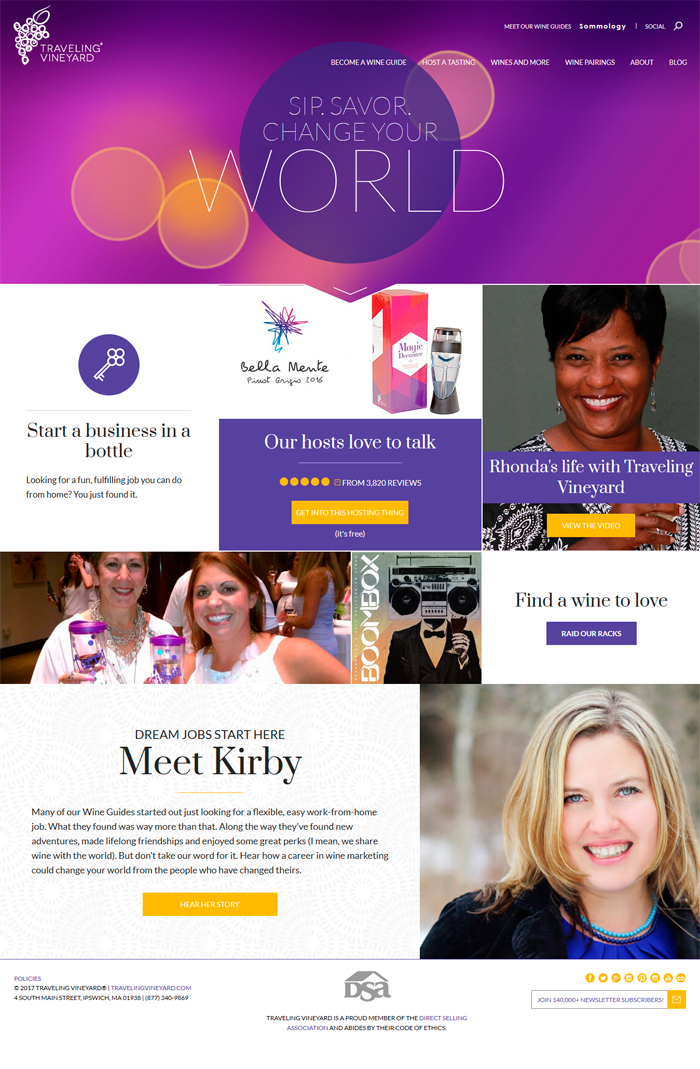
Image via Traveling Vineyard
The Traveling Vineyard lives out their brand mission in everything they do and is expressed through the language and messaging on their website. This critical change in focus in their brand mission is what delivered a dramatic increase in people becoming Wine Guides; resulting in an increase in wine sales.
Their revamped strategy became about getting people to become Wine Guides (ultimately sales reps) who share wine experiences in a relaxed home environment. Instead of focusing on getting people to sell their wines, they changed their internal culture to be one that would transform lives by providing fulfilling, fun and flexible work.
In this way, they were able to bring their customers and employees together with a more meaningful purpose. Changing their internal brand mission resulted in a 49% increase in conversion rates for Wine Guides in the first year, and 83% lead forms submission on web pages that expressed the company’s purpose.
Related: Brand Profiling: How Brand Performance and Purpose Are Inextricably Linked
2. Brand Mission Attracts The Right People
One of the greatest reasons for incorporating a brand mission, is that it helps attract the right people, for the right reasons. Who are the right people? Those that will ultimately buy from you. And of course, it’s essential to draw the right employees to your company; those that are the right “fit” for your company’s culture, and those who will add the most value to your vision.
Your brand mission aligns the internal (staff) and the external (customers).
The Airbnb Story: How Three Ordinary Guys Disrupted an Industry, Made Billions … and Created Plenty of Controversy, by Leigh Gallagher, tells of how a young brand developed into a household name because of its brand mission.
Essentially, Airbnb is a tourist booking facility, but what separates it from it’s competitors is that the focus is on making memories and creating experiences. It is this mission and message which has been and continues to be one of the key drivers behind their success.
In mid-2014, Airbnb developed a new mission — to make people around the world feel like they could “belong anywhere.”
The founders wanted Airbnb to stand for something much bigger than travel; it would stand for community and relationships and using technology for the purpose of bringing people together.
Related: The Impact of Company Brand Culture On Driving Performance and Increasing Sales
Check out the story[4] about Airbnb’s massive growth, and how their brand mission catapulted it:
Although now a household name in many parts of the world, Airbnb started as most businesses start – small. Now that they’re a well known brand name, you may be thinking their branding story may not be applicable to you.
Related: Brand Stories: 5 Compelling Examples That Sell Themselves
Even if you’re flying solo – you may be a freelance writer, business consultant, coach, author, IT consultant, or building a multi-level marketing business – you should still have a brand mission to differentiate yourself from your competitors.
Do a Google search with your niche keyword and you’ll see just how many online competitors you have, so you need to develop and use your brand mission as part of your strategy for standing out and getting attention from the people who need your service or product. As a solopreneur, it’s especially important to discover your uniqueness and leverage your personal brand identity. Otherwise, you’re just another anchovy fish lost in the ocean.
If you want direction and support empowering you to transform your brand so you stand out and increase your sales then the Persona Brand Building Blueprint™ Mastermind is the perfect fit for you.
This is a two-day brand building intensive shared with a small group of like-minded peers where you work on your brand with our leadership. In fact, over the two days, you re-evaluate your brand, codify it and create your brand strategy to stand out and attract your ideal customers from the ground up whether you’re revitalizing an existing brand or creating a new one.
This is not a theory based programme but a highly interactive fast-track course where you work intensively on your brand throughout the programme duration, under our tutelage, using our ten step system to:
- Completely re-evaluate your brand to make it much stronger so it’s highly visible enabling you to increase your profits
- Map out your brand in full so it’s codified and comprehensively documented to grow your business faster
- You leave with your total brand road map or GPS of your brand empowering you to manage your brand, stand out and attract your ideal customers so you multiply your sales
Outcome: Your brand transformed so you increase your sales.
At the end of the two-day Persona Brand Building Blueprint™ Mastermind, you leave with your fully documented brand strategy ready for implementation in your business or organisation.
If your team is larger and you’d like to include everyones’ participation in the Persona Brand Building Blueprint™ Mastermind then we also run in-house private client brand building intensives tailored to your bespoke requirements so you’re empowered to take your business further a lot faster.
Ring us today and discover how to build your winning brand to make it really stand out and increase your sales
Want to know more? Give us a ring T: +353 1 8322724 (GMT hours 9:00 – 17:00) to discuss your preferences or send us an email to [email protected]
Regardless of the size of your business, you need to know who you are, what you stand for and what you can offer your audience because the service or products you promote are not what you are really selling.
Remember, 60% of branding is about perception and only 40% is about your product or service so you must touch the heart first if you want to move the mind.
Once you understand that and begin marketing with that concept front of mind, that’s when you’ll really start generating serious revenue.
Just like a brand mission for conglomerates, a personal brand is a combination of your strengths, passions, gifts, and the purpose that you bring. In the next video by TEDx Talks, Anand Pillai provides a formula for building a personal brand, remembering that your mission is what drives your business, solo or major conglomerate:
Related: Personal Branding: We Are All CEOs (Part 1)
Smaller B2B companies can stand out from the crowd simply by providing brilliant content on their website, as the Buffer App does on their blog. A simple branding strategy for smaller businesses, Buffer is creating a cult following by publishing content that is irresistible and central to their brand mission.
Buffer’s brand mission[5] is to “create helpful, actionable content that helps people with their social media presence. To connect a community of like-minded people with passions for social media, self-improvement, and Buffer’s values. To share Buffer’s internal approach, philosophies, and culture to help create a new way to work”.
Their mission drives their brand strategy and consequently all marketing activities.
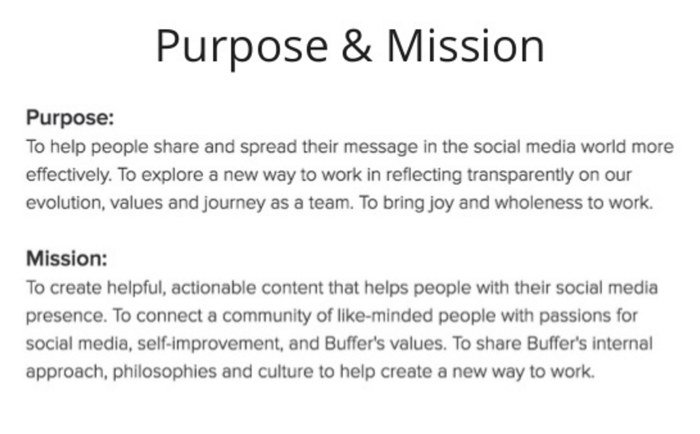
Image via Buffer Slideshare
Buffer was only founded in 2010. In 2016, their staff complement doubled from the previous year. They now boast 75 employees who work remotely around the world.
Their success is further evidenced by the results achieved with their content: one of their posts[6] has been shared 23 000[7] times and earned 210 000 likes on Facebook. Not bad for a humble team of 75…
By addressing target audience problems via blogging, and becoming known for publishing genuine value-add content, they get the attention of the people they’re targeting.
Related: Personal Branding: We Are All CEOs (Part 2)
3. Brand Mission Creates Consistency
Have you ever experienced exceptional service from a company, and the next time, expecting the same level of service, were deeply disappointed?
That’s because the brand lacks consistency. In fact, consistency engenders trust so if your brand falls short in any areas of the business or at any brand touch point, be it your brand collateral, customer facing staff, service or product delivery you undermine the power of your brand. Consequently, your sales and profitability are also immediately compromised because inconsistencies plant seeds of doubt and create bad customer experiences. Companies who boast consistent good customer experience are those who put standards in place to carry out their brand mission consistently in everything they do.
Brand awareness also depends on consistency. In fact, every aspect of managing, protecting, directing and preventing unintentional brand sabotage requires branding style guides.
Related: Brand CSR: The Business Case for Successful Branding and Social Good
If you want direction developing your brand so you can increase your profits then take a look at our online brand building eprogramme called the Personality Profile Performer™. This online course takes you through all the key steps you need to implement as you build your brand, including your brand mission. You can watch a free course preview here.

Build Your Brand Mission Using The Personality Profile Performer™ Programme with Lorraine Carter Here
If you’d like professional direction to develop your brand mission and would like to explore working with us then send us an email to [email protected] or give us a ring T: +353 1 8322724 (GMT hour 9:00 – 17:00). We’d be delighted to talk with you.
4. Brand Mission Ensures Clarity
Companies who provide the best customer service experience are driven by employees who are armed with clarity because their brand mission enables effective and fast decision making with clear judgment. Consider the front facing staff member who is shouted at by a disgruntled customer. After calming the customer down and finding out the exact issue, the employee is able to rectify the issue by taking some kind of on the spot action.
In the same way, leaders who have a clear sense of what matters most, are enabled to set priorities and determine the best path for the organization. Clarity drives commitment and dedication.
Related: CEO Brand Leadership: How Vision Drives Brand Growth
Summary
The best companies in the world to work for, and the most profitable, understand the power of the brand mission.
Developing your brand mission drives the company vision. The key benefits are brand awareness, effective lead generation, professionalism, and most importantly, providing a united purpose between employees which in turn generates multiple other benefits that collectively impact the bottom line positively to increase sales.
Related: What’s a Cult Lifestyle Brand And How Do You Create One?
Essentially, your brand mission is the driving mechanism that activates success.
In summary, your brand mission drives profits by:
- Boosting employee performance and company growth
- Attracting the attention of your ideal target audience
- Creating consistency in brand messages and service which builds trust
- Providing clarity for leaders and employees
Questions to consider…
- How does your business achieve its overall vision?
- What need does your business hope to fulfill?
- Does each member of your team understand his or her role in your overall brand vision?
- What separates you from your competitors?
- How do you touch the hearts of your customers so buying decisions are no longer about selling at the lowest price?

Build your brand strategy at the Persona Brand Building Blueprint™ Mastermind with Lorraine Carter
[1] https://www.brandingstrategyinsider.com/2016/12/how-brand-purpose-propels-brand-profits.html#.WTab1dwlHIU
[2] https://innovatenewalbany.org/branding/why-purpose-driven-companies-are-beating-the-competition/
[3] http://genuinely.co/what-we-do/case-study/
[4] http://fortune.com/airbnb-travel-mission-brand/
[5] https://www.slideshare.net/Bufferapp/buffer-marketing-culture/2-Purpose_Mission
[6] https://blog.bufferapp.com/10-scientifically-proven-ways-to-make-yourself-happier
[7] https://insights.newscred.com/branded-content-marketing-hubs/
Using Video To Broadcast Your Brand Message So You Attract Your Ideal Customers
/0 Comments/in Brand Message, Brand Personality, Brand Profiling & Positioning, Brand Strategy, Branding, Video /by Lorraine CarterThere are two important takeaways for you in this post about brand message using video:
- The first is that you don’t need to be a big-time corporation to publish a video that becomes popular. Today, if you have a smartphone, you can make a great marketing video to depict your brand message. A one-minute video highlighting the things that make your company unique could become your best customer acquisition tool yet.
- The second is that successful videos by SME / SMB businesses or solopreneurs are always about delivering a brand message with strategic intent. It’s got to give a value-add message or contribute towards enhancing your target customers lives. Alternatively, it needs to incorporate story building and showcase your brand’s characteristics. Injecting personality into a company’s online presence is what sets your business apart from the crowd so video is the perfect vehicle to showcase your brand at its best with its stand out personality.
Publishing a video just for the sake of it will not bring success because it’s the brand strategy behind the video content coupled with the people delivering the message to the camera, which makes it successful.
Related: Video Brand Strategy Top 11 Tips for How and Why You Need To Use Video
Codifying Your Brand Message to Stand Out and Create Great Videos to Attract Your Ideal Customers
Every business has its own brand, whether it’s strong because it’s been created with deliberate intent, or whether it’s weak and undeveloped as a consequence of a series of unplanned actions.
To codify your brand means to plan the messages you want to send out to attract your ideal customers and the manner in which you send those messages via the personality of your brand. Video is one of the brand strategy mechanisms for sending out those messages. Every message your business sends out must be in line with what you want your brand to be saying about itself and what it stands for — it’s purpose.
Related: Personality Matters: Bringing Your Brand to Life to Grow Profits
It’s often the case that SME / SMB businesses unintentionally neglect their own branding, to their detriment, because they lack the big brand know-how. Our mission is to empower business owners and entrepreneurs so they can transform their brands and increase their sales.
So the question here is, what’s the big deal about brands and branding?
Well, think of your brand as a store. What would it look like in a mall or shopping centre so it attracted the right customers? Because not all people or businesses will buy into your brand and what it stands for, and not all people or organizations need what you offer. So if your brand was a store you’d want to attract those for whom your product or service really meets their needs and is a great fit and deter those who are not really your ideal customers.
So. What would your brand look like if it was a store in a mall or online?
If you’re having trouble relating to this question consider asking these questions about your brand because the answers will provide some insight to help you codify your brand so it stands outs and attracts your ideal customers:
- What makes your brand unique?
- How do you want those you serve to feel when they’re doing business with you? For instance, is the experience uplifting, fun, spiritual, exciting, or something else?
- Who are your customers, or who do you want them to be? Picture them in your mind and describe them in detail.
- Who are your competitors and how do they compare?
- What problem does your company solve?
- Is your value proposition relevant to your customers?
- When people think about your brand, what feelings do you want to evoke?
- What kind of personality should your brand have in order to attract the right customers?
Codify who your brand is, it’s personality and promise, into a core concept that becomes the filter and directional reference for building and implementing your message and brand strategy.
If you want some direction developing your brand and your brand strategy so you can build your brand using really strong shareable videos then take a look at our brand building programme called the Personality Profile Performer™. This online course takes you through all the key steps you need to implement in building your brand. You can watch a free course preview here.

Want to create your strong brand message so it really attracts your ideal customers? Find out how here
Ring us today and discover how to make your brand message really stand out
Give us a call T: +353 1 8322724 (GMT hours 9:00-17:00) or drop us a line here to [email protected]. We’d be delighted to talk with you.
Use Video to Stand Out and Make Your Brand Matter to Your Customers Through Your Brand Message
Statistics show that on average, a person abandons a website, or blog post on a website, within 10 – 20 seconds[1] of arrival, but the average video holds 37%[2] of people’s attention right to its very end. Since the majority of videos are just under two minutes long[3], we can safely state that video is more effective at getting and keeping attention, than the written word alone.
In addition, according to SocialFresh[4], video produces the 2nd highest return on investment out of all content types:
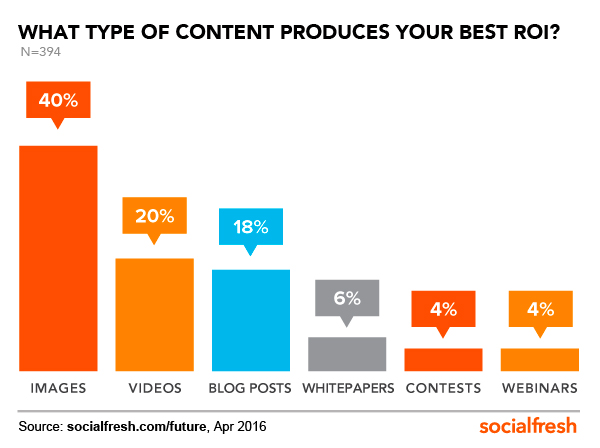
Image via SocialFresh
Reason enough to incorporate video as part of your brand strategy, right?
Related: From Zero to Hero; How To Become a Must-Have Brand
As a practical example, let’s take a look at Code.org[5], whose success is attributed to one smart video that happened to go viral…
Code.org, a nonprofit committed to bringing computer science education to all children, was founded in 2013.
In the video, co-founders Ali and Hadi Partovi interviewed the world’s top entrepreneurs, like Bill Gates and Mark Zuckerberg. They were questioned about their early experiences with computer programming.

Image via Code.org
The interviews were edited down to a five-minute clip with the purpose of inspiring a new generation of coders and teachers.
The video, titled “What Most Schools Don’t Teach,” reached the number #1 spot on YouTube on its very first day. As a result, 15,000 schools reached out to Ali and Hadi for help after the video went live.
Today, just a few years later, Code.org boasts 15 million student accounts with 10,000 additional created every day.
Being a small non-profit, and to keep expenses down, the videos they distribute today showcase their staff instead of paid actors.
Have a look at their first video which launched their nonprofit:
What separates them from other struggling non-profits, is their strong brand vision which is carried out in everything they do.
Code.org’s brand strategy development has always been simple and consistent: it is to be inspirational to students (the video that went viral certainly is, providing motivation and inspiration to thousands), to “think big but act small”, to be personal, transparent, thankful and community-based. They are good at demonstrating their brand values in clear video brand messages.[6]
Related: Brand Profiling, How Brand Performance and Purpose Are Inextricably Linked
To Use Video To Share Your Brand Message You Don’t Have to be Bill Gates
To use video in your brand message does not mean you have to have the pockets of a Bill Gates. Anyone with a smartphone that can record a video has the means of video marketing!

Image via MarketingWeek
Many small businesses have successfully gained traction with video in various, affordable ways, like:
- Featuring their own employees
- Using their leaders
- Interviewing their customers
- Building brand stories
Related: Brand Stories: 5 Compelling Examples That Sell Themselves
A great example of affordable, but wildly popular branded videos, is Catmantoo who for one of the owner’s videos, got a whopping 7,858,920 views.
Catmantoo is owned by Robert Dollwet, a solopreneur who has no website but shoots videos that people love. They are actually ads, but you wouldn’t know it, which is precisely why they’re so popular. Robert sells all of seven products from his Facebook page[7] which has an extraordinary 959,145 likes:
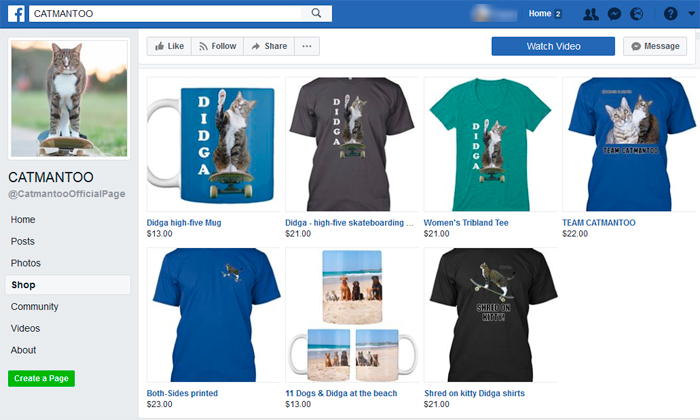
Image via Catmantoo
This entrepreneur uses the animals he trains to make entertaining videos. It’s pretty clear that his online success and cute cats are tightly intertwined; strong personality, compelling storytelling and clever brand strategy which achieves results. All his videos tell a story and then only briefly at the end, mentions Robert as the trainer of all the animals involved. Clever!
Discover how to build your stand out, customer attracting brand personality here so you can grow your business more profitably and faster.
You can demonstrate your product or services and broadcast your brand message just as effectively by video too. The key for video is either to add value, touch hearts or be entertaining because it’s only when you emotionally engage people positively that you’ll move them to buy.
Even the more traditionally conservative B2B service sectors can get it right, just like Taulia[8] who provides a cloud-based invoice, payment, and dynamic discounting management solutions. In a niche not widely recognized for blazing creativity, they’ve managed to carve a place for themselves by building a strong brand personality, creating entertaining videos that become beloved to their primary customers.
Related: Use Humour in Branding to Create Strong Emotional Bonds so You Increase Sales
In amusing worst-case-scenarios, Taulia demonstrates by video what can happen when you don’t use their services, not only giving a laugh but providing a humorous take on a serious B2B solution. Their videos build a connection between their customers, their brand and their company. Their videos have pushed them above their less creative competitors so they stand out and attract their ideal audience.
The proof is in the results – this brand attributes more than $125M[9] in their marketing pipeline to video content, and found that 45% of all closed-won deals had involved prospects watching their videos.[10]
The lesson here is that Taulia creates videos that appeal directly to its target audience. Bhaji Illuminati, Senior Marketing Manager explains, “Rather than trying to make one video that appeals to the entire world, we’ve learned that we can get stronger results by making many videos that appeal to specific audiences.”[11]

Image via MarketingWeek
Their primary branding strategy is to use humour and infuse personality into communications in order to deliver what might otherwise, in another format, be perceived to be a bit heavy going or not get noticed at all by their target audience. With your phone, you can also use Facebook Live to host a live video broadcast, similar to a webinar, to your primary audience and followers and make it a highly interactive experience.
Conclusion
If other entrepreneurs and small business owners have accomplished great success sharing their brand message through videos, so can you. All you need is a smartphone, good planning and a clear, well-developed brand strategy. Find out more about how you can build your brand here.
Questions to consider
- How can you inject vibrant personality into your brand message using video so it stands out and attracts your ideal customers?
- What would your brand look like if it was a store in a mall, what are its key stand out elements to attract your ideal customers and how can you convey that in a video?
- What are the key factors you need to integrate with your brand strategy to increase your sales?
Want to develop your brand so you can increase your profits but you’re not sure where to start to get a successful return on your investment?
If you want direction and support empowering you to transform your brand so it increases your sales then the Persona Brand Building Blueprint™ Mastermind is the perfect fit for you.
This is a two-day brand building intensive shared with a small group of like-minded peers where you work on your brand with our leadership. In fact, over the two days, you reevaluate your brand, codify it and create your brand strategy from the ground up whether you’re revitalising an existing brand or creating a new one.
This is a highly empowering workshop where we take a deep dive, step-by-step into how to build a brand. You discover and apply the systems and methodologies used by some of the world’s greatest brands as you work on your brand under Lorraine Carter’s direction and tutelage so you can grow your own brand and business.
This is not a theory based programme but a highly interactive fast-track course where you work intensively on your brand throughout the programme duration using our ten step system to:
- Completely re-evaluate your brand to make it much stronger so it’s highly visible enabling you to increase your profits
- Map out your brand in full so it’s codified and comprehensively documented to grow your business faster
- You leave with your total brand road map or GPS of your brand empowering you to manage your brand, stand out and attract your ideal customers so you multiply your sales
Outcome: Your brand transformed so you can increase sales.
At the end of the two-day Persona Brand Building Blueprint™ Mastermind you leave with your fully documented brand strategy ready for implementation in your business or organisation.
If your team is larger and you’d like to include everyone’s’ participation in the Persona Brand Building Blueprint™ Mastermind then we also run in-house private client brand building intensives tailored to your specific needs too.
Just drop us a line to [email protected] or give us a call T: +353 1 8322724 (GMT 9:00 – 17:00) to discuss your preferences and we’ll develop your brand building intensive bespoke to your particular brand requirements so that you’re empowered to develop your brand and take your business further a lot faster.
[1] https://www.websitemagazine.com/blog/5-reasons-visitors-leave-your-website
[2] https://blog.hubspot.com/marketing/video-marketing-statistics
[3] https://blog.hubspot.com/marketing/video-marketing-statistics
[4] https://www.ibm.com/think/marketing/social-keeps-mobile-marketing-tactics-current/
[5] http://www.code.org
[6] https://code.org/about/values
[7] https://www.facebook.com/pg/CatmantooOfficialPage/shop/?ref=page_internal
[8] https://taulia.com/en/
[9] http://www.dmnews.com/marketing-strategy/taulia-a-b2b-brand-with-a-strategic-approach-to-video-marketing/article/345971/
[10] https://www.clickz.com/b2b-companies-can-buck-the-norm-and-win-big-in-marketing/26174/
[11] https://www.vidyard.com/blog/how-taulia-became-a-video-marketing-powerhouse/
The Age Of Internal Branding And Selling It From The Inside Out
/0 Comments/in Brand Ambassador, Brand Champions, Brand Culture, Brand Experience, Brand Leadership, Brand Strategy, Brand Values, Branding, Internal Branding /by Lorraine CarterDid you know that internal branding is the best way to get employees to develop a powerful emotional connection to your products or services so they become your top performing brand advocates because effective internal branding increases sales?
That emotional connection with the brand and its culture is what drives more than 2 million[1] people annually to apply to Google for a job.
Google is an unparalleled example of a brand which cultivates cult-like desire to work for them because candidates know that while Google only selects the creme-de-la-creme, the most elite top performers, the company also values their staff as their most important asset and looks after them accordingly. In short, Google understands the power of internal branding strategy, and selling the company from the inside out.
When staff are emotionally vested in the brand, they’re more loyal, motivated, productive, innovative, fulfilled and inspired by a unified sense of purpose.
Related: What’s a Cult Lifestyle Brand, and How do You Create One?
By applying branding principles from the inside first, employees glean a fuller knowledge of the brand and what’s important to it. Employees begin to “live” the vision of the company in their day-to-day tasks. And when employees live that vision in their roles the brand comes alive so your customers experience your brand’s promises to the full.
Related: Top 10 Brands for Customer Experience and What You Can Learn From Them
This article shares with you how to sell your brand from the inside out. But first, to make it more relatable so the theory is transformed into practical application take a look at this video which talks about the concept of internal branding.
The Link Between Employees and Internal Branding
Think about it for a moment, 60% of branding is about perception and only 40% about your product or service so one of the most significant factors influencing customers choices is how they perceive, think and feel about your brand through their interactions with it.
Contrary to what many think, branding is not just a logo or the aesthetics of a company’s website. Branding is the core DNA of your company – what makes it tick, the driving purpose behind everything you do and how you express your stand out brand personality at every touchpoint to engage your customers emotionally.
Because it’s only when you touch the heart that you move the mind so transforming your customers into committed fans, enthusiastic referral partners, word-of-mouth advertisers and repeat purchasers.
Anthony Robbins explains how emotions influence and drive all purchasing decisions masterfully here.
Related: Personality Matters: Bringing Your Brand to Life to Grow Profits
If you want some direction developing your brand and your internal branding then take a look at our brand building programme called the Personality Profile Performer™. This online course takes you through all the key steps you need to implement in building your brand. You can watch a free course preview here.

Build Your Profitable Brand Using The Personality Profile Performer™ Programme with Lorraine Carter
Alternatively, if you want in-person professional direction with expert input to develop your brand and internal branding and would like to discuss working with us then give us a call T: +353 1 8322724 (GMT hours 9:00-17:00) or drop us a line to [email protected]. We’d be delighted to talk with you.
Employees Are Your Internal Brand
The 2016 Edelman Trust Barometer confirms that people trust what employees say about the company more than they trust what the company says about itself. Trust is central to every brand because, without it, people will not buy from you.
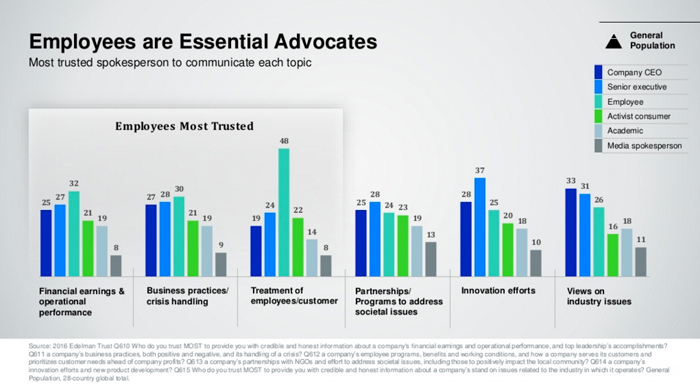
Image via Edelman Insights
When do employees represent, express, becoming living evidence of and talk about your brand? Front-facing staff represent your brand through their interactions with your customers. Non-front facing staff represent your brand when they discuss your company with friends and family and chat about their day on social media. Employees chat amongst themselves about your company — the good, bad and ugly.
Consider this, most of your employees are on social media and are either phenomenal ambassadors for your brand, indifferent workers clocking in time or worse still major detractors undermining your brand reputation.
Related: Top 10 Tips For Managing Your Brand Reputation
The ripple effect and network of influence per employee is extraordinary. It’s up to you to harness this for the greater good with strong internal branding or, through negligence, be at the mercy of come what may. At the very least make brand induction and training integral to what you do so you ensure your team are empowered, feeling and talking positively about your brand. In order for this to occur, your staff need to:
- Express your brand and what it stands for, or aims to stand for — a traditional mission statement won’t cut it because it lacks real-world application
- Identify how their behaviour supports or detracts from the brand
- Synthesise and consequently feel highly motivated to choose the right behaviour for the positive growth of the brand
At its most basic, this is how employees are integral to the internal branding of your company, which sells from the inside and extends to the outside.
Related: Socially Empowered Employees: Are They Key to Building Your Brand Online?
A Common Problem With Internal Branding
The problem is that few leaders understand the need or know how to convince employees of the brand’s “goodness”. Dangerous assumptions including thinking that employees are naturally attached to the brand. This couldn’t be further from the truth.
Related: CEO Brand Leadership: How Vision Drives Brand Growth
Leaders often operate with the mindset that staff are getting paid to do a job and that should be motivation enough. The truth is, if you want a higher performing company, a culture of innovation and growth with increased sales, you have to promote your brand to your employees first through an internal branding strategy, because they are an extension of your brand and take your brand to the outside world.
Related: The Case for Brand Disruption: Be the Disruptor or Be Defeated
The How Of Selling Your Brand From The Inside Out
Going Deeper Than Traditional Vision, Mission and Values
Internal branding is far more than wall hanging statements with the vision, mission and values expostulated on them. If you really want to impact behaviour favourably, you need to develop a culture around your brand vision, mission and values in a relatable, actionable sense so it’s a living expression, on a daily basis, of what you stand for.
Because when a company desires a specific culture that nurtures the positive behaviour of both leadership and employees, it must be carefully developed through brand profiling and brand strategy development. Otherwise, the vision, mission and values end up being superficial nonsense which a best delivers no meaningful or measurable results or worst still undermines the business.
When employees truly buy into your brand vision, mission and values, it drives their behaviour, commitment, performance and sense of fulfilment. In order to achieve this, they need to understand and value how their role in the company fits into and contributes to the overall goals of the business.
Related: Brand Sponsorships, The Best Brand Ambassadors Are Already On Your Payroll
An example of going deeper than a mere superficial listing the company’s vision, mission and values is Teva Pharmaceuticals.
In 1901, three gentlemen started a small wholesale drug distribution centre in Jerusalem.
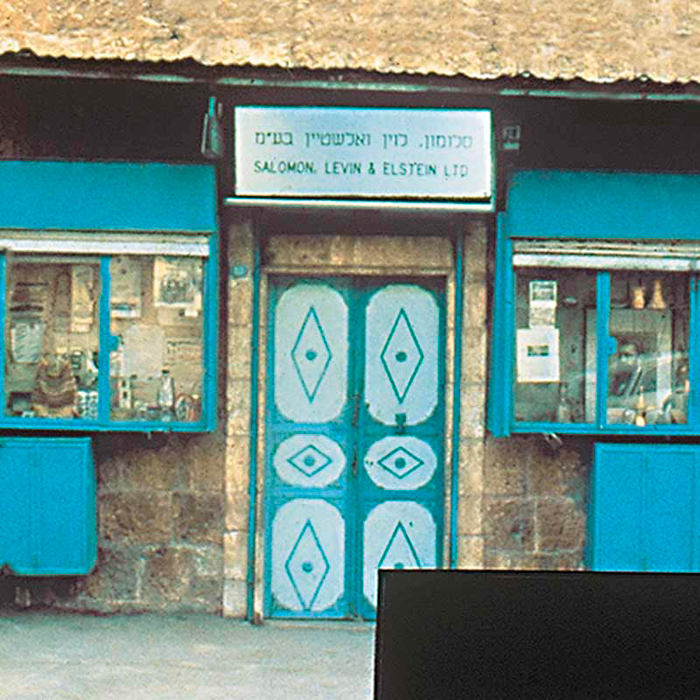
The beginning of what would become Teva Pharmaceuticals in 1901. Image via Teva
Eventually, they moved into drug manufacturing, and between 1980 and 2000, they grew internationally. Today, they are the largest generics pharmaceutical company in the world.
In 2016, with more than 43 000 employees, Teva Pharmaceuticals embarked on a new brand identity strategy[2].
Beck Codner, Group EVP, Corporate Marketing and Communications, said, “Only when we are confident that all our employees are aligned around a shared purpose and how that should be reflected in how we think and how we act, will we be ready to externalise our new brand”.
As part of the new brand strategy, the Teva brand style guide and code of conduct was developed, so that employees would be well informed, empowered and armed with transparent standards to work with and represent the brand.
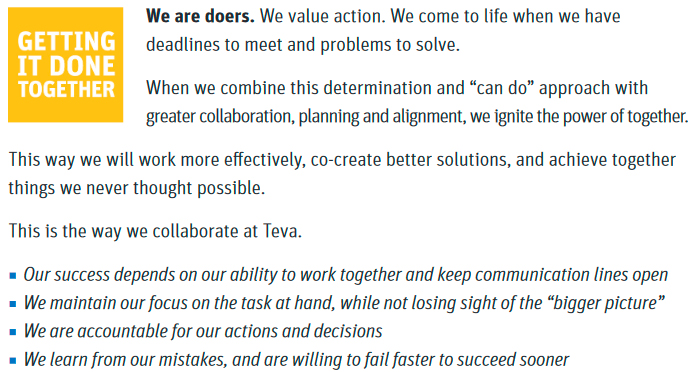
A screenshot of a section of Teva’s new code of conduct, based on their new internal brand strategy. Image Via Teva Pharmaceuticals
Watch Teva’s historical progress:
Focus On Marketing Your Brand Internally First
Whatever brand strategy, marketing or advertising you plan to activate externally, sell it to the inside first, and whatever communication is planned for your external market, customers and stakeholders alike, ensure you inform and induct your leadership team and employees first.
Why bother? Here’s one B2B example for the sake of clarity:
“Before you can do anything to gain success in your business, you’re going to need the buy-in and support of your team. A team is what grows the business. It’s not the technology; it’s not the computers.”
according to Yaniv Masjedi, Vice President of Marketing, Nextiva, a cloud based communication company.[3]
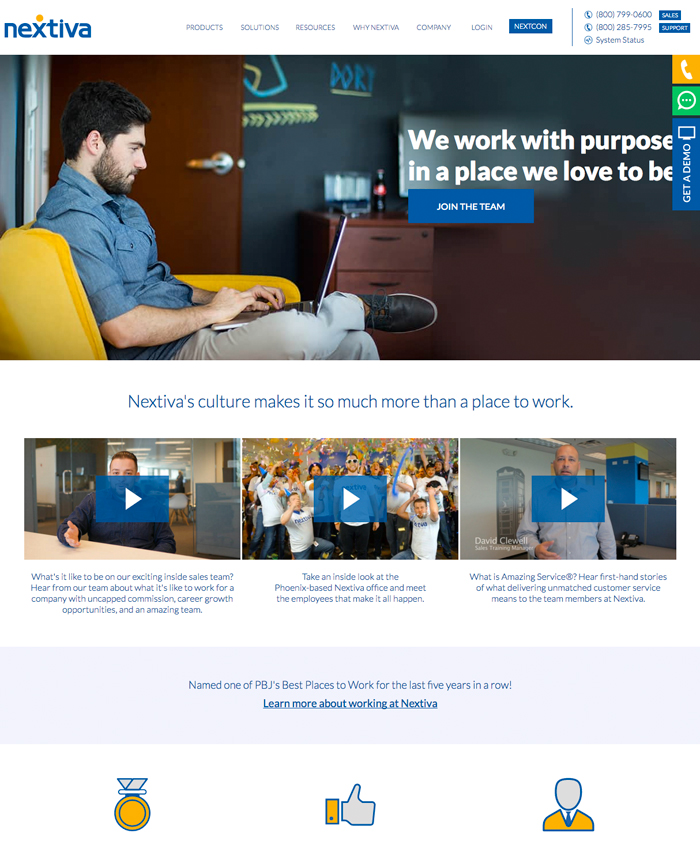
Image via Nextiva
In 2008, when Nextiva just opened its doors with a handful of staff, it was easy to keep people emotionally bonded to each other and the company. As it expanded to 300, with employees situated in other locations and many not knowing the names of fellow colleagues, it became necessary in 2012 to find a way to communicate company news more effectively, without resorting to the old fashioned newsletter.
“NexTV”, a weekly, internal video series was launched. They started small; each week, different employees would gather around a laptop camera to make announcements collected from all departments. Just 2 minutes long, it was uploaded onto YouTube – edit-free – for internal viewing. This killed two birds with one stone, so to speak because people in various locations could see the faces of fellow colleagues, some of whom they had never met, and get the news at the same time.
On average, 74% of Nextiva’s employees watch the series each week, with a 96% engagement rate.
The concept generates office fun and excitement, especially when employees know they’re being featured in the next episode.
Related: The Impact of Company Brand Culture On Driving Performance and Increasing Sales
In 2013, Nextiva started using more sophisticated means of internal communication, but the no-frills laptop camera method certainly achieved its purpose and has become a cornerstone of the company’s brand culture.
An example of one of the NexTV episodes.
Now logically, you’d think to sell change or marketing internally first, is a natural course of action, but for the majority of businesses, it’s not, because its importance is overlooked or forgotten. This is fatal for organisational goals, bottom line performance and sales growth.
Ensure management teams and staff are highly informed, fully engaged and relate to what’s happening before executing strategy externally, and if you make changes, be sure to sell it to them first.
Related: From Zero to Hero; How To Become a Must-Have Brand
Making Your Brand Come Alive for Staff Through Internal Branding
The point of branding – externally as well as internally – is to form an emotional connection with your ideal primary customer. This is why it’s no good simply documenting a dry vision, mission and values statement and filing it away or allowing it to become a wall dust-catcher because that accomplishes nothing. The vision, mission and values have to come alive for every staff member in order to increase performance and sales.
Related: Brand CSR: The Business Case for Successful Branding and Social Good
Staff have to live your brand and feel an emotional connection with it in order to sell it to your ideal customers whether in a formal work capacity or informally through their external life interactions.
Easier said than done; this section alone requires strategic thought: how do you make the brand come alive for your employees?
Firstly, the primary message needs to be introduced and the rationale behind it shared. This must be carefully developed because people are naturally resistant to change. When certain key factors are in place though, it makes the internal brand launch more readily received.
Secondly, the newly refreshed or revitalised brand message needs to be reinforced throughout employee touch points in daily activities. This needs to be strategically planned, just as you would plan a full-on customer marketing strategy.
Questions the brand strategy team needs to consider and plan around are:
- What do employees think of the brand and company?
- What do we want them to think?
- What will convince them of this?
- Why should they believe us?
Once these questions are evaluated and answered, the creation of internal branding collateral can be initiated. You don’t want to convey information, you want to persuade, emotionally engage and motivate. Make it actionable, fun, engaging and interesting.
Related: Brand Renaming: Name and Tagline Change Considerations
The Role of Communication In Internal Branding Strategy
It is often the HR department who execute internal communications when it should be the role of the marketing department who have the skill to market the brand not only to customers but to employees alike.
Communication is key internally, and yet the majority of businesses fail dismally at it.
In the 1980’s, HSBC, one of the largest financial organisations in the world, experienced rapid growth, and as a result, their employees became disconnected amongst themselves, the organisation and its leaders. In addition, the organisation had a traditional top-down approach, which made it just about impossible to obtain feedback from those on the ground. In today’s world, it’s not always an ideal model for a highly innovative, rapidly growing more progressive company which builds with high employee engagement.
The challenge was, how to get 250 000 people in one organisation, to be heard and feel their feedback mattered, and to change the traditional hierarchy?[4]
Enter Exchange Forum; the objective of which was to change the role of management.
Related: Brand Audits – How to Use One to Grow Your Profits
Internally known as the “shut up and listen” project, the forum was kicked off by holding meetings where management needed to “shut up” and listen to what their staff were saying, while saying nothing in return, so that the information would come from the bottom up instead of from the top down, recognizing that employees have opinions and knowledge that would be important to management decisions, especially for strategic changes.
The long term goal is that every employee should attend and participate in at least four “shut up and listen” exchanges each year.
Has the project worked? Take a look at this next video by HSBC titled, “through the eyes of our people”, and then answer this: from this video, does it appear as if employees feel connected now instead of disconnected?
Today, at HSBC, employees feel heard and leaders have learned the value of listening to what their team has to say.
Questions to consider with your internal branding
Is it time to sell your brand more strongly from the inside out? Consider these questions to improve clarity:
- Does your business sell its vision, mission and values to your employees first?
- Is your HR or Marketing department responsible for internal communications and are they integrated — working as a cohesive team?
- Can your staff and leadership articulate what your brand stands for and what makes you different to your competitors?
- Is your brand a living entity with a clear vision underlying at the heart of everything you do? Do your staff know how to incorporate the vision into their daily tasks?
Want to develop your internal branding strategy so you can build your team into your high performing brand champions but you’re not sure where to start to get a successful return on your investment?
Just drop us a line to [email protected] or give us a call T: +353 1 8322724 (GMT 9:00 – 17:00) — we’re here to help.
If you want direction and support transforming your internal branding strategy so it empowers your team and increases sales then the Persona Brand Building Blueprint™ Mastermind is the perfect fit for you.
This is a two-day brand building intensive shared with a small group of like-minded peers where you work on your brand with our leadership. In fact, over the two days, you reevaluate your brand, codify it and create your brand strategy from the ground up whether you’re revitalising an existing brand or creating a new one.
This is a highly empowering workshop where we take a deep dive, step-by-step into how to build a brand. You discover and apply the systems and methodologies used by some of the world’s greatest brands as you work on your brand under Lorraine Carter’s direction and tutelage so you can grow your own brand and business.
This is not a theory based program but a highly interactive fast-track course where you work intensively on your brand throughout the programme duration using our ten step system to:
- Completely re-evaluate your brand to make it much stronger so it’s highly visible enabling you to increase your profits
- Map out your brand in full so it’s codified and comprehensively documented to grow your business faster
- You leave with your total brand road map or GPS of your brand empowering you to manage your brand, stand out and attract your ideal customers so you multiply your sales
Outcome:
Your brand transformed so you can increase sales.
At the end of the two-day Persona Brand Building Blueprint™ Mastermind you leave with your fully documented brand strategy ready for implementation in your business or organisation.
If your team is larger and you’d like to include everyone’s’ participation in the Persona Brand Building Blueprint™ Mastermind then we also run in-house private client brand building intensive programmes too.
Ring us to discuss your brand building preferences
Just drop us a line to [email protected] or give us a call T: +353 1 8322724 (GMT 9:00 – 17:00) to discuss your preferences and we’ll develop your brand building intensive bespoke to your particular brand requirements so that you’re empowered to develop and lead your internal brand building team.
[1] https://www.brazen.com/blog/archive/uncategorized/2-million-people-apply-work-google-year-heres/
[2] http://www.tevapharm.com/news/teva_pharmaceuticals_embarks_on_strategic_corporate_identity_program_to_build_a_global_brand_02_16.aspx
[3] https://www.marketingsherpa.com/article/case-study/internal-marketing-b2b-video
[4] http://www.gatehouse.co.uk/the-employee-communication-revolution-ripping-up-the-rule-book-at-hsbc/
7 Ways A Brand Refresh Will Make You More Productive And Increase Sales
/0 Comments/in Brand Refresh, Brand Relaunch, Brand Relevance, Brand Revitalisation, Brand Strategy, Branding, Rebrand, Rebranding, Return On Investment, Revamped Design, Revitalized Design /by Lorraine CarterIt’s often human nature to resist change because persisting with the comfortingly familiar feels ‘safer’. Sadly the marketplace is littered with case studies and examples of once very successful brands now gone forever, often because their leaders didn’t implement the critical changes needed, together with a brand refresh, that were essential to ensuring a successful future.
“A Business That Doesn’t ChangeIs A Business That IsGoing To Die”Frank Perdue |
The most recent example of this kind of demise is Stuttafords, a 159-year icon leading department store in South Africa, which will permanently close its doors at the end of July 2017.[1]
Another example is Sears, America’s previously largest retailer. It was a mistake their leaders made to assume no one could overtake them, and yet both Walmart and Amazon have. Sears failed to adapt and as a result, in June 2017, closed yet another 72 stores.[2]
Related: How Do Challenger Brands Become Market Leaders?
Both Stuttafords and Sears could still be flourishing today if they had been more open to real change and the sad fact is, to quote Buckminster Fuller, “You never change things by fighting reality. To change something, build a new model that makes the existing model obsolete” so a well-timed brand refresh underpinned by a thorough brand audit could have resulted in a very different story for both.
In this article, we’ll uncover the 7 ways a brand refresh could have prevented the downfall of some of the world’s greatest companies, to make them more productive so they could have maintained and increased their sales.
What Is The Meaning Of “Brand Refresh”?
A brand refresh means giving your core proposition a health check, using a brand audit, to identify where weaknesses, strengths and opportunities for innovation exist.
The findings can change the very foundation of a business, indeed the whole business model. It may have kept Sears, once the largest American retailer, and the doors of Stuttafords open.
For example, a brand refresh may mean a change in communication emphasis internally and externally, or a change in operations or perhaps an aspect of the brand story needs leveraging differently or the development of a whole new product or service is required to add a new revenue stream and meet customers’ needs. It may be that the company’s messaging, language and copywriting needs re-evaluation because it’s no longer relevant or appropriate to where the market has moved.
Related: Rebrand or Refresh? That is the Question
Refreshing your brand may even require a change at the very core of the business and what it stands for, and how that manifests in the organisation’s culture. What’s often misunderstood by many is thinking that a “brand refresh” entails cosmetic changes in the form of design only — that is a big mistake!
Changes such as design, video, photography, fonts, colour palettes and so forth should only be instigated as a result of much deeper strategic input where the brand has been fully evaluated, re-codified and mapped out for current and future market relevance.
In fact, nothing in the visual aspect of a brand should be touched or given a visual refresh until the strategic rationale behind that change has been fully developed in depth because it’s the outputs from that process that informs and provides much-needed direction for a design change. |
Approaching your brand refresh in this way ensures a successful result and strong return on investment while also avoiding decisions based on uninformed subjective preferences.
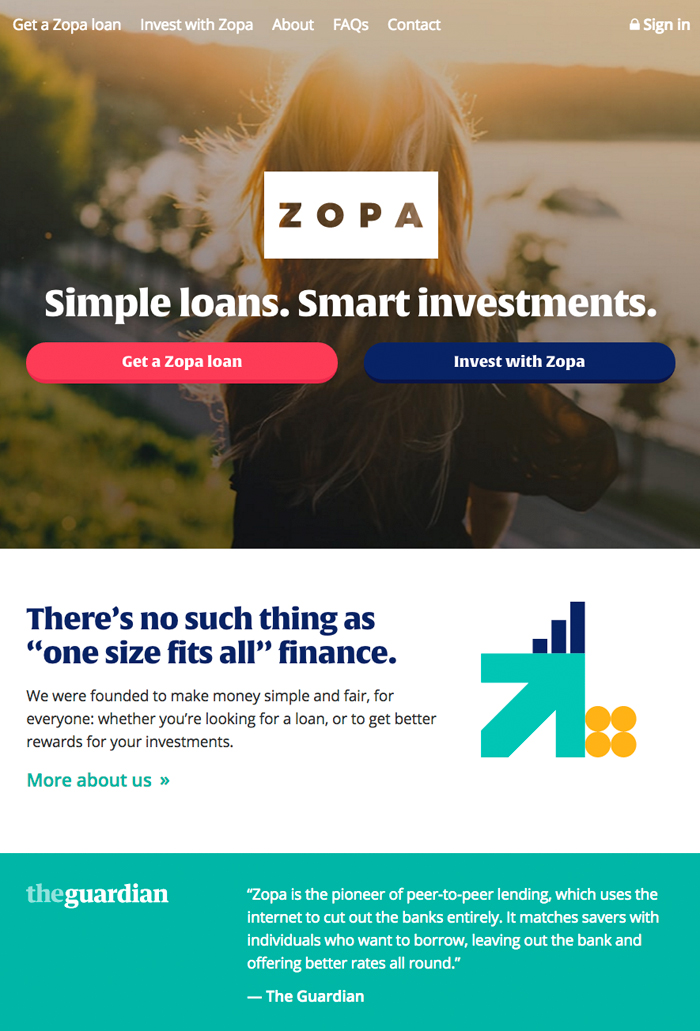
Image via Zopa
Zopa, a UK based company founded in 2004 and consisting of approximately 200 staff members, was the first peer to peer lending company, and provides clarity on what “brand refresh” entails:
Related: The Power of Disruptor Brands and Challenger Brands
Personal Branding: We Are All CEOs (Part 2)
/0 Comments/in Brand Profiling & Positioning, Brand Reputation, Brand Strategy, Branding, Personal Branding /by Lorraine CarterIn the second of a two-part post, we take a look at identifying your personal brand and maintaining it…and why personal branding no longer important just for celebrities or VIPs anymore.
To reinforce the message of this article Part 1, we reiterate: Everyone has a personal brand, whether they like it or not. To get the right personal brand so you can;
- Align yourself more effectively with your corporate brand
- Leverage yourself as an industry leader
- Mitigate risk in your business
- Get paid what you deserve!
- Manage your reputation
- Accelerate your career
- Get headhunted
you must map it out, create it to your liking, develop it and then nurture it.
Personal Branding – When the Brand is You
When Does Personal Branding Begin?
Good question. Actually, you’re never too young to begin personal branding. In our example from Part 1 of this article, we introduced Ryan. Ryan is 5 years old, has nearly 8 million subscribers, is the top money maker on YouTube, and is currently attracting more than $1 million per month from advertisers on his channel, Ryan ToysReview.

Image via Ryan’s Toy Review – YouTube
Fair enough, Ryan has built spectacular audience numbers for his personal brand over a two year period. Having said that, it does mean he got started at age 3!
Related: Personal Branding: We Are All CEOs (Part 1)
Some of the biggest YouTube celebrities are super young and successful. If you’re fine with being just a little bit jealous, check out these 13 pint-sized millionaires covered in a 2014 feature in Business Insider.[1]

ZayZay and Jojo, 5 and 7, are huge on YouTube with millions of subscribers and views of their videos
However, personal branding isn’t just about one’s social media presence and a sales channel. So many early life choices about ourselves — our preferences in clothing, grooming, friendship circles, sports, hobbies — are actually branding at work as we mature and learn about ourselves.
In his TEDx talk at the University of California at Berkeley, Tai Tran talks about his personal journey from “zero to infinity.” Born in Vietnam to street vendors, new to the USA at age 6, he explains the why of building a personal brand — that it’s not what you know, it’s who you know by growing your network — and how to achieve your goals.
School Leavers Personal Branding: Your Personal Statement, Your CV, Your Network
In our final year of secondary school, we’re made keenly aware that a whole new world awaits. Whether it’s crafting a personal statement for a university application or writing a CV for employment or volunteerism, we are already putting a stamp on a personal brand.
A network of peers and mentors further defines your personal brand. By the time you’re preparing to leave school, you are expected to have gathered some reliable references who are happy to testify to that unique brand which is you.
Finding the Personal Brand at Your Core
Two popular 20th-century theories, Myers-Briggs and The Colour Code, both related to personality types have been widely embraced by individuals, educational concerns, and employers for several decades. There’s still some relevance in both these last century approaches so these exercises may help you determine your personal brand.
Related: Personality Matters, Bring Your Brand to Life to Grow Your Profits
Introduced in 1962, the Myers-Briggs Type Indicator® identifies and describes 16 distinctive personality types based on preferences posed by 93 questions such as these.[2]
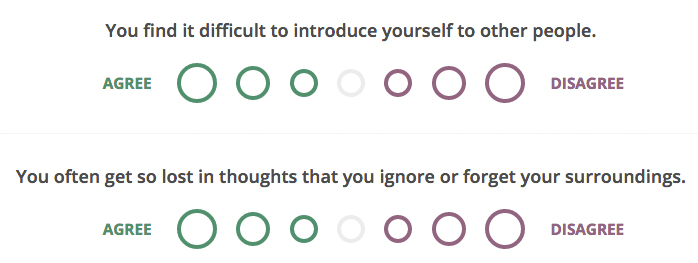
Image via myersbriggs.com
Personality type combinations derive from your tendencies, as follows.
Favourite world: Do you prefer to focus on the outer world or on your own inner world? This is called Extraversion (E) or Introversion (I).
Information: Do you prefer to focus on the basic information you take in or do you prefer to interpret and add meaning? This is called Sensing (S) or Intuition (N).
Decisions: When making decisions, do you prefer to first look at logic and consistency or first look at the people and special circumstances? This is called Thinking (T) or Feeling (F).
Structure: In dealing with the outside world, do you prefer to get things decided or do you prefer to stay open to new information and options? This is called Judging (J) or Perceiving (P).
These possible personality type combinations derive from your gut-reaction answers:[3] When you decide on your preference in each question, you have your own personality type, which can be expressed in four letters.
Back in 1987, Dr. Taylor Hartman created The Colour Code Personality Profile,[4] based on the principle of four key personalities, which he then organised into colour groups for ease of identification.
REDS
Need to look good technically, be right, and be respected. They are strong leaders and love challenges.
BLUES
Need to have integrity and be appreciated. They are focused on quality and creating strong relationships.
WHITES
Need to be accepted and treated with kindness. They are logical, objective, and tolerant of others.
YELLOWS
Need to be noticed and have fun. They love life, social connections, and being positive and spontaneous.
Reds
Reds are motivated by power. They are decisive and assertive. They’re planners. Problem solvers, adventurous and restless, planning for what’s going to be happening in the future. They are also great at solving problems and fixing situations. Reds are natural born leaders.
> Examples: Mark Zuckerberg, Angelina Jolie, Lebron James
Blues
Blues are driven by connecting and building relationships. They can be rather controlling in wishing to ensure everyone else is connected also, creating a potential clash with reds who don’t want to be controlled. Blues are people pleasers who can take critical feedback if it means being a more likable person. Blues are loyal; they remember names, dates and events.
> Examples: Oprah Winfrey, Mel Gibson in “Braveheart,” Forrest Gump character
Whites
People whose core colour is white are driven by peace – they really just want to get along but are often misunderstood. They are logical, passive, accepting, truthful, and tolerant. They may need to be asked for an opinion think and will frequently come up with amazing ideas when prodded a bit. Whites can are happy to work independently and avoid confrontations.
> Examples: John Lennon, Mahatma Gandhi, Dr. Martin Luther King, Jr.
Yellows
Yellows are the fun lovers, optimistic, spontaneous social butterflies. They’re carefree and enjoying the moment. Yellows let baggage go, they can easily erase things and move on. They are very curious people, like to learn new things and ask a lot of questions. Yellow have magnetic charisma.
> Examples: Ellen deGeneres, Will Smith, the Genie in Disney’s “Aladdin”
Dr. Hartman’s theory is supported by a 45-question free quiz, found here, intended to help you identify your personal brand.
Different Types of Offline Personal Brands
Your personal branding begins with your name. Although choosing your birth name wasn’t your decision, so much of your personal brand — how you appear to the world — is completely within your control.
These are a few examples of highly effective “types” you may model yourself on.[5] You may encompass one or more of them…indeed, the rare individual has something from all of these types.
As George Bernard Shaw said, “Life isn’t about finding yourself. Life is about creating yourself.”
- Youthful Excitement: You are daring, spirited, imaginative and up-to-date
- Authenticity: You are honest, genuine and cheerful
- Confident: You are tough, strong, outdoorsy and rugged
- Competence: You are reliable, responsible, dependable and efficient
- Elegant Sophistication: You are worldly, cultured, charming and glamorous
- Unique Persona: You are meticulous, independent, fearless and Persistent
- Zen Master: You are conscientious, observant, intelligent and humble
Different Types of Online Personal Brands
Faced with the prospect of online personal branding, some people protest, “Hey, I’m just a regular person!” No worries, that’s a type of personal brand, too.
Still, others say, “I don’t go online that much.” Neither good nor bad, such a behavioural choice also reflects your personal brand, frankly.
Take a look at these seven basic types of online personal brand[6] to determine where you fit.
1. The Content Creator
You’ve got talent. Whether your platform is YouTube, Instagram, Medium, your own blog or something else, you are known for producing terrific original content.
2. The Curator
Just like a museum curator, you assemble a collection of interesting stuff and share it widely. People follow you because you’ve got your finger on the pulse, even if you’re not the creator.
3. The Journalist
You can analyse and interpret without passing judgement. You’re part content creator and part content curator. You provide fact-based commentary and are a reliable voice; a go-to news source for your market or niche.
4. The Instigator / Critic
You play devil’s advocate and raise questions when other people don’t think to consider an alternative angle. You’re able to spark meaningful debate in your industry.
5. The Case Study
You’re the first to try things, an early adopter. People come to you as a good source to find out what works, what doesn’t, and why because they figure you’ve tested it.
6. The “Regular Person”
You let your personality shine through and it comes across as likable, genuine and authentic, even if you don’t consider your extraordinary in any particular field. Your brand is entirely built off you just being you.
7. The Industry Expert
You know your stuff inside and out. You’re widely considered a true professional in your niche and people turn to you for top notch advice.
Big or Small, Personal Brands Benefit From Care and Attention
Sure, life throws curve balls. But at the end of the day, you are the one responsible for making or breaking your own personal brand. No fabulous trophies or championship prize monies can do that on your behalf.
Related: Brand Sponsorships: The Best Ambassadors Are Already On Your Payroll
Tiger Woods: One of the world’s most successful golfers, a highly paid athlete and brand ambassador, has seen his brand fizzle under his own stewardship.
Related: Brand Crisis – How to Manage, Survive and Thrive
Case Study: Executive Chef Matthew Dolan
Executive Chef Matthew Dolan started working in kitchens as a dishwasher and a fry cook at age 14. In June 2016, his own top-class restaurant, 25 Lusk, was selected to host President Obama for a business leaders dinner in San Francisco.
Although Dolan humbly says, “I am a cook,” there’s a great deal more to it. Watch as Chef Dolan mentors Thunder, a former criminal, as a chef-in-training apprentice, changing the young man’s life in the process. The astute viewer observes that two personal brands are being shaped here.
Maintaining Your Personal Brand
It’s instilled in us from an early age that first impressions count and that we must maintain a good reputation. This applies to both online and offline interactions. Your personal brand is defined by your reputation, including other people’s perceptions of you, in everything you do, everyone you meet, everywhere to go.
If you want some direction mapping our your personal brand then take a look at our brand building programme called the Personality Profile Performer™. This online course takes you through all the key steps you need to consider in building your brand. You can watch a free course preview here.
Alternatively, if you want in-person professional direction and expert consulting support to build your brand and would like to discuss working with us then drop us a line to [email protected] or give us a call T: +353 1 8322724 (GMT hours 9:00-17:00). We’d be delighted to talk with you.
Controlling your personal brand must include awareness of your internet-based reputation. The management of your personal brand includes proper exposure across all internet “real estate.” Your professional website, social media profiles, photos, and published content should all reflect the brand promise you want to deliver.
Related: Brand Promises: How to Craft, Articulate and Live Them for Brand Success
Top 7 Tips for Developing and Maintaining Your Personal Brand
Fundamental to the process is your decision about exactly how you want to manage your social media outlets. Do you prefer to isolate Facebook for purely social reasons and use LinkedIn for your professional life? What about Instagram, Twitter, Snapchat, YouTube and more?
- Photo: Ditch the sunglasses. Don’t use blurry images. Invest in a headshot that’s professional enough for your website and for LinkedIn A more relaxed profile image is appropriate for Facebook and other social media platforms whereas LinkedIn requires a more professional and groomed image — ladies don’t wear off-the-shoulder numbers on LinkedIn because it looks like you’re naked (unless that’s congruent with your personal and professional brand!) Pay attention to cover photo choices as well.
- Profile: Craft an elevator pitch. Make it brief enough for Twitter or for shaking hands in person when you’re asked: “What do you do?” It is intended to support your personal brand and strengthen your brand recognition. Write a succinct and compelling personal biography.
- Position: State your position. Reflect a personal brand philosophy that’s well defined and consistent in every piece of content that appears in connection with your name.
- Website: Build a quality website. It’s one of the first places you’ll be discovered online. Keep it vibrant, up-to-date, interesting and a positive reflection of your personal brand.
- Business cards: Ensure it’s consistent in messaging, language and design style with your other online assets, both social media profiles and website. Offer yours. It goes with a handshake, smile, and a look in the eyes. Even in the digital age, people still use business cards and yours should reflect your personal brand. It’s worth the extra effort and shows considered thought and preparation.
- Privacy: Stay secure. Double check your privacy settings on all platforms. The default may be to share with everyone, including those you are not connected with, and this may not be your preference. Best advice: Don’t post anything you’ll regret, especially as online privacy settings are frequently changing and old posts aren’t easy to cleanse.
- Network: Don’t hide. Make valuable connections. Join groups online and offline that reflect your interests and provide the right opportunities for supporting your personal brand and making connections within your niche.
Related: CEO Brand Leadership: How Vision Drives Brand Growth
Question to consider…
Is your personal brand the best it can be? Ask yourself the following six questions so you can evaluate, identify, develop and maintain your personal brand more effectively:
- If your personal brand isn’t altogether clear to you, how can you make it clear to others?
- How could you benefit from assistance in creating a personal brand?
- Is your personal brand consistent across all platforms, both online and offline?
- Have you set objectives for your personal brand?
- How confident are you that your personal brand will achieve its objectives?
- Does your personal brand need a health check?
[1] http://www.businessinsider.com/these-9-young-youtube-stars-are-all-becoming-household-names-2014-10
[2] http://www.myersbriggs.org/my-mbti-personality-type/mbti-basics
[3] MBTI® Manual: A Guide to the Development and Use of the Myers-Briggs Type Indicator®
[4] https://www.colorcode.com/choose_personality_test
[5] https://www.linkedin.com/pulse/20140602153641-73005678-the-seven-types-of-highly-effective-personal-brands
[6] https://www.inc.com/nicolas-cole/there-are-7-different-personal-brand-archetypes-which-one-are-you.html
About
Persona Branding & Design Consultants
Contact: Lorraine Carter
T: +353 1 832 2724
Carra House
Howth, Co. Dublin, Ireland
Copyright © 2007-2022 All rights reserved.
Persona Design Consultants Ltd.
Registered in Ireland: No. 201997
Member of


